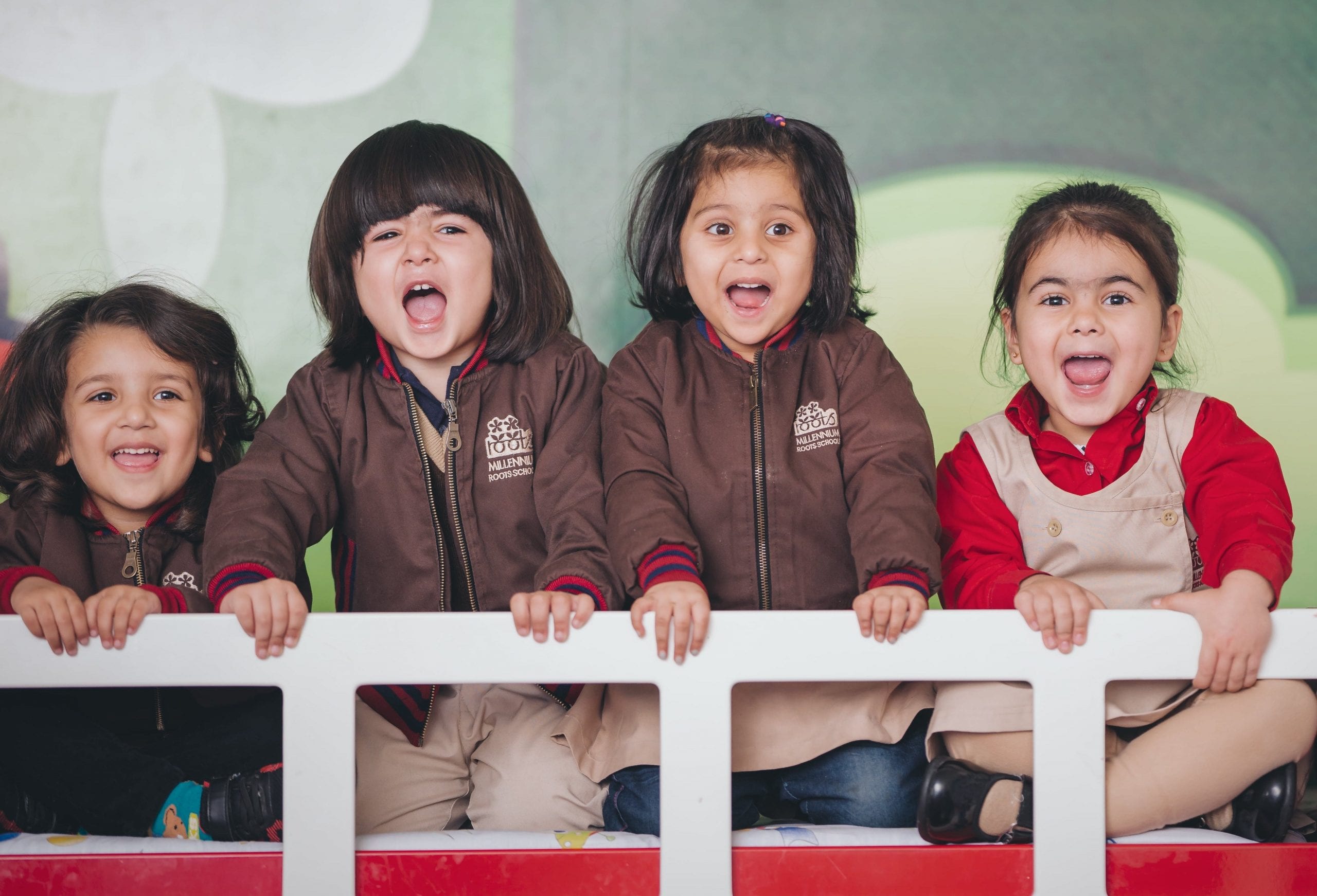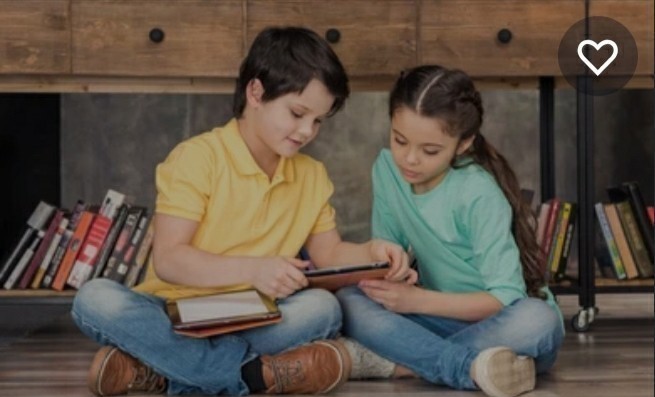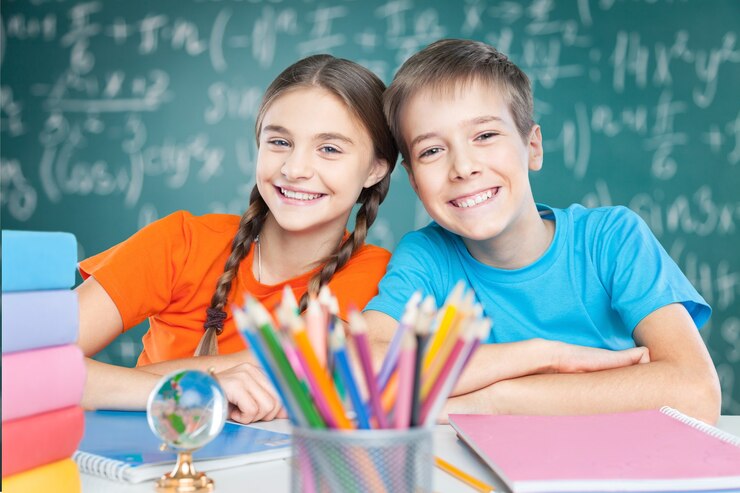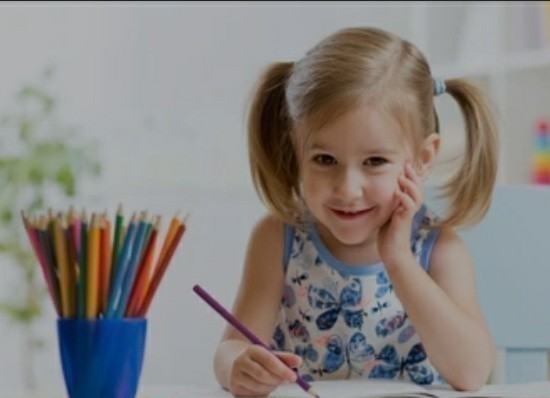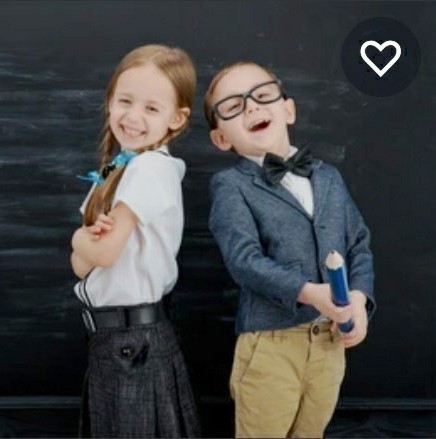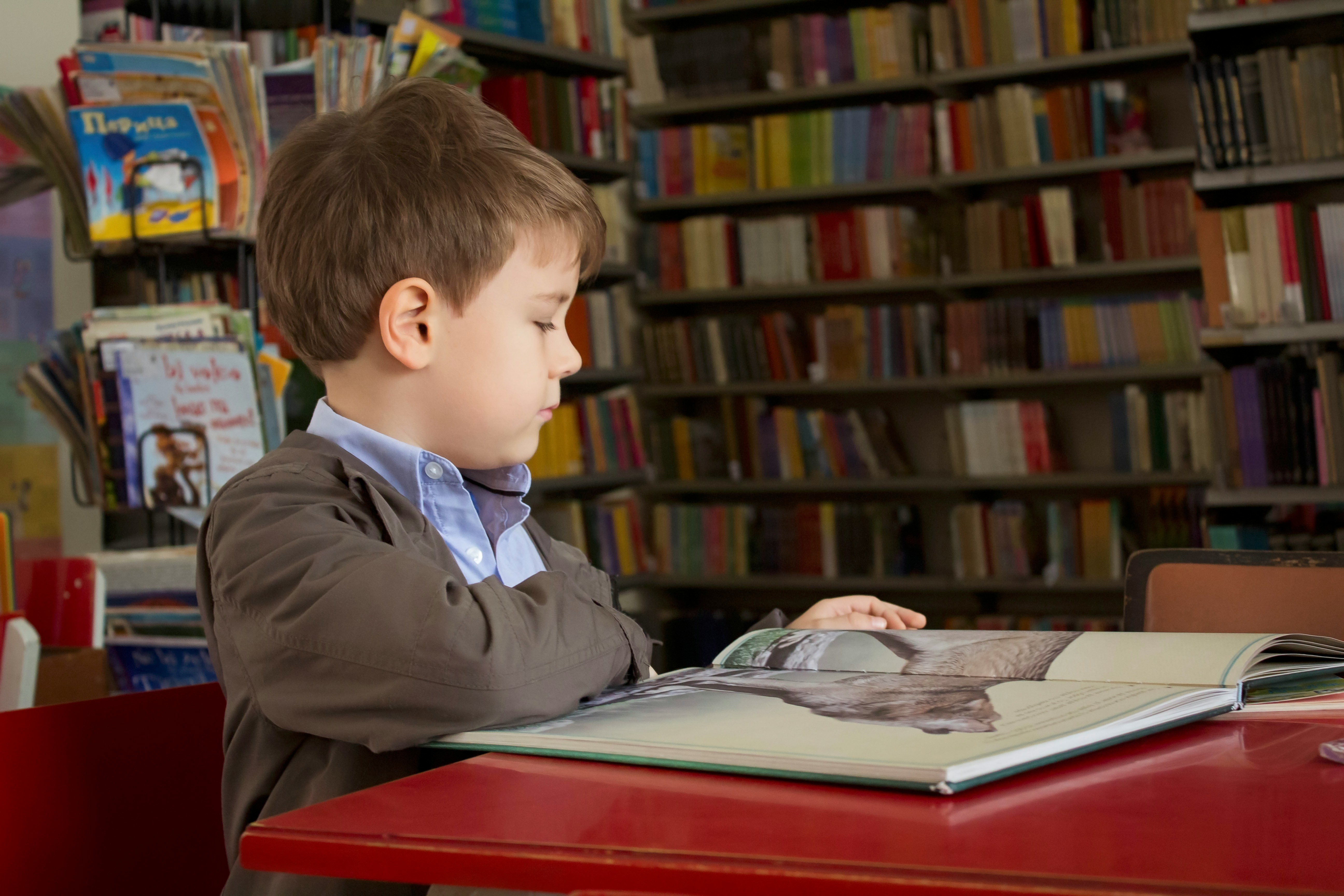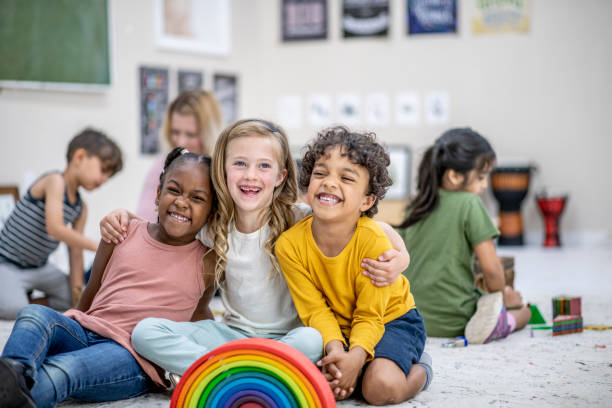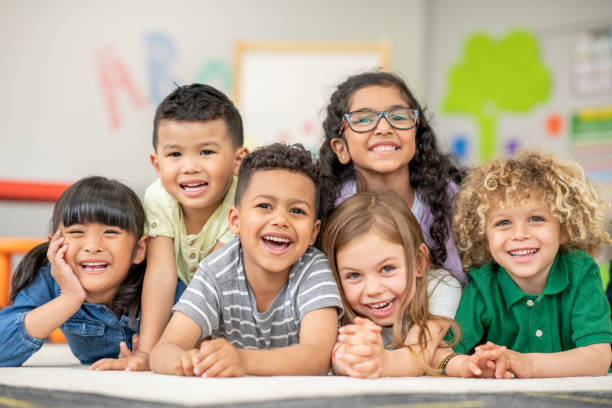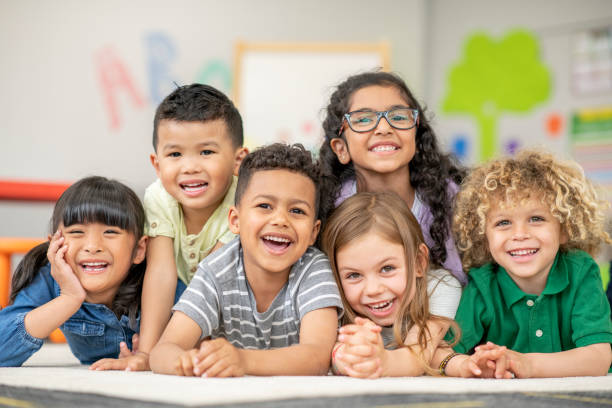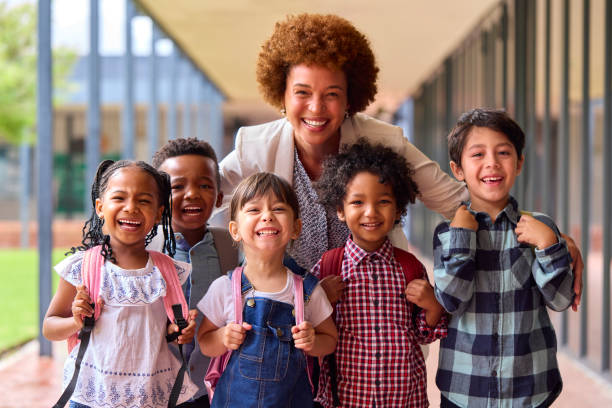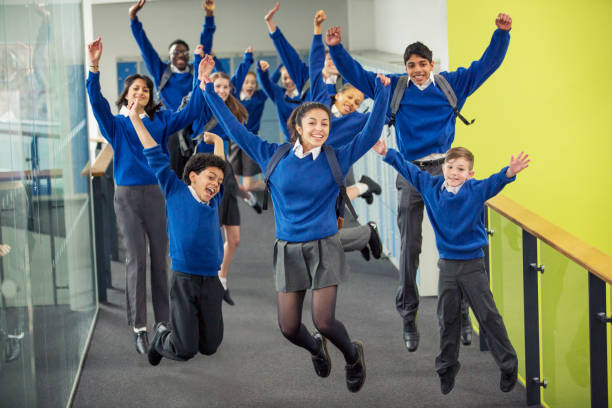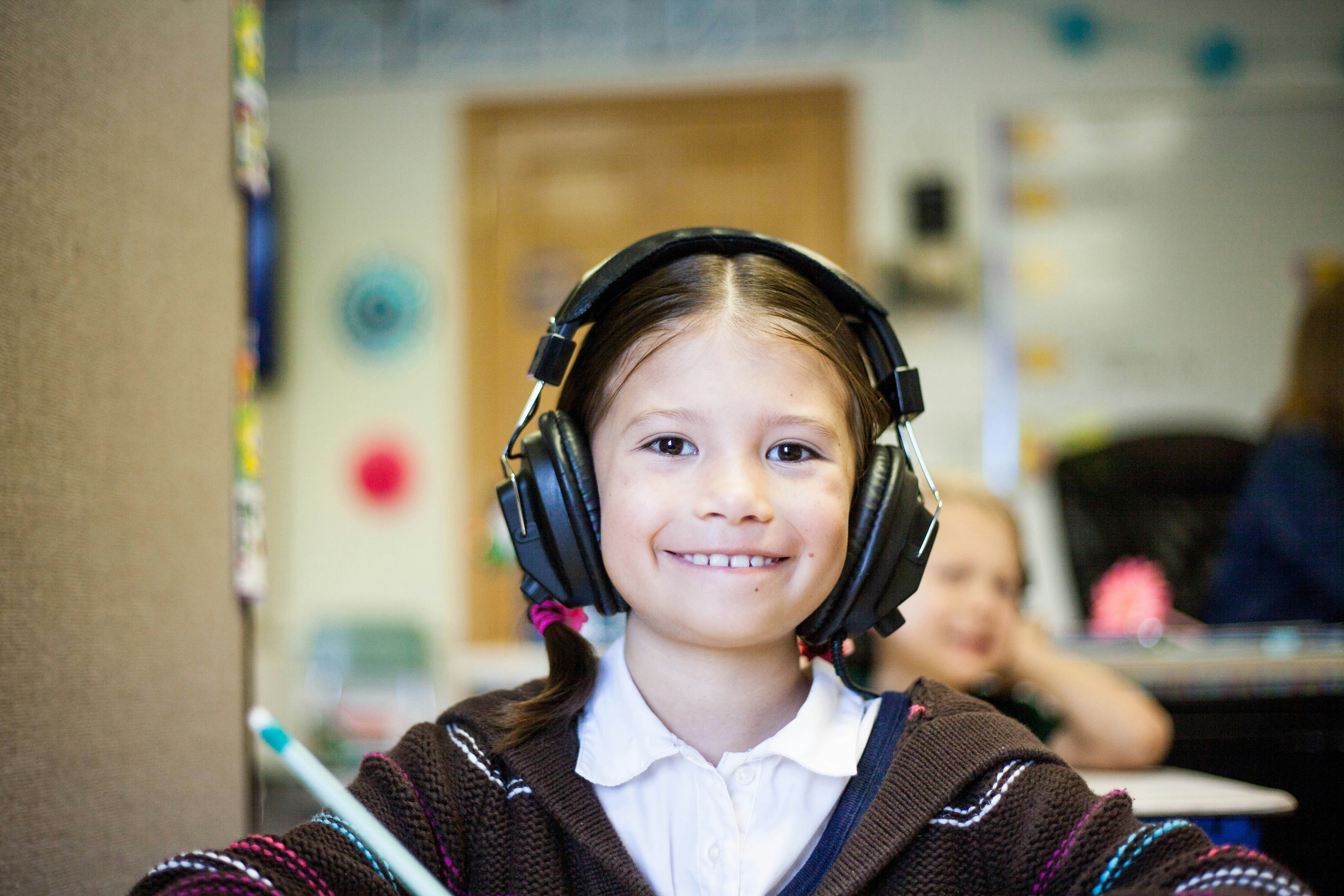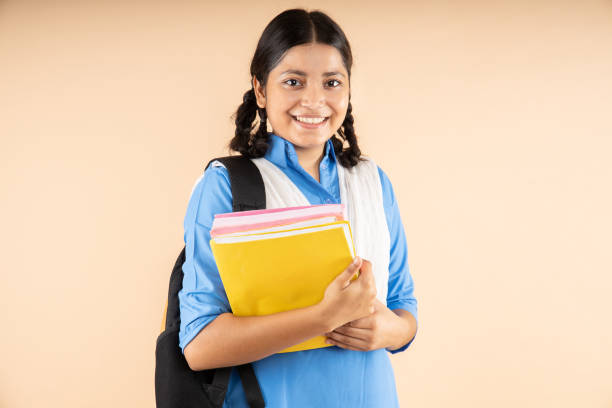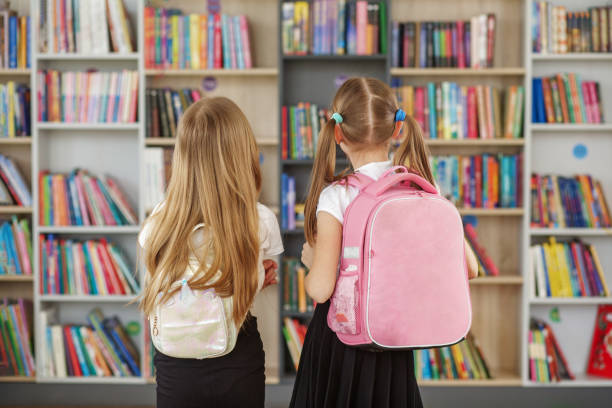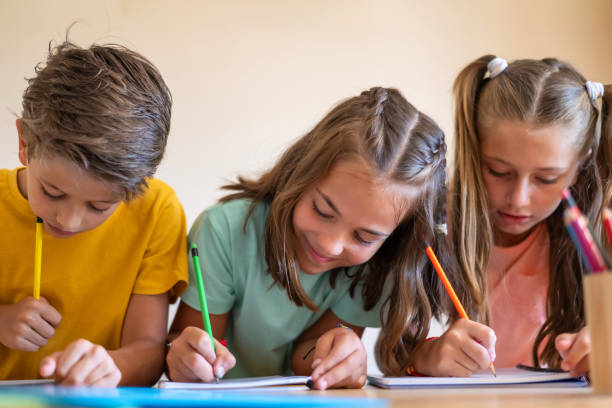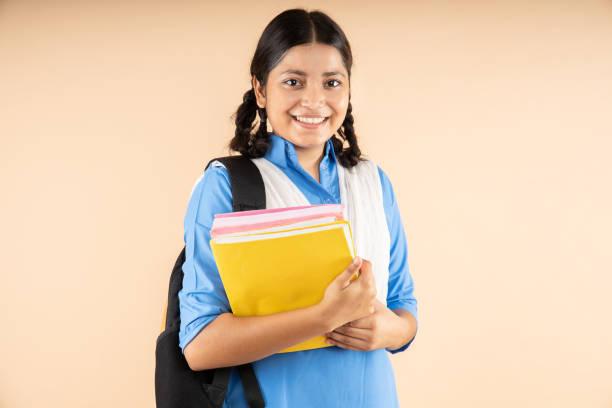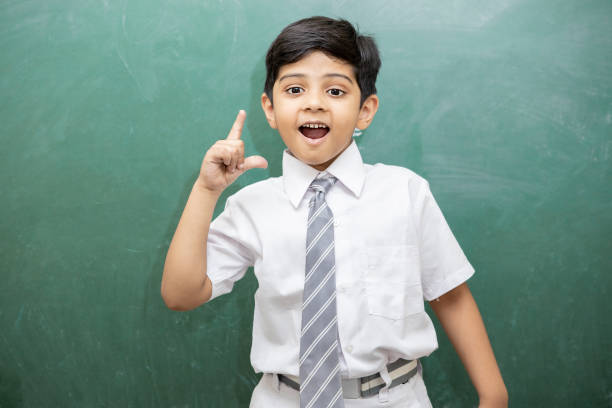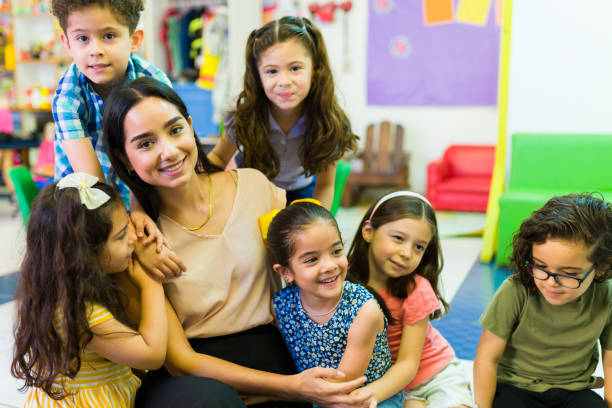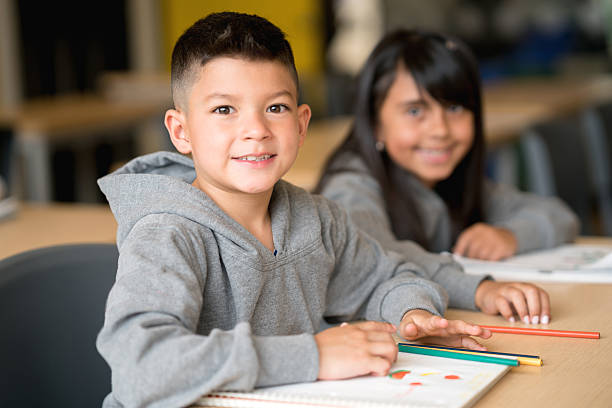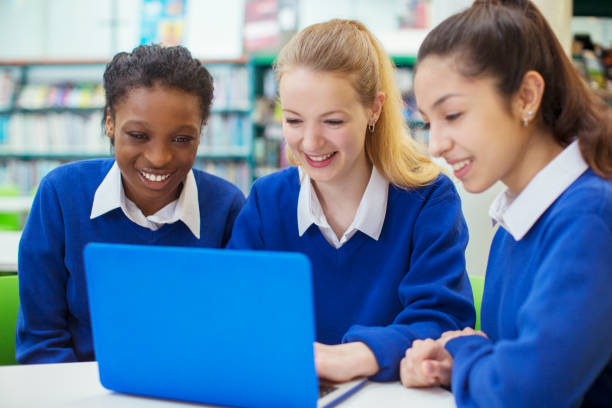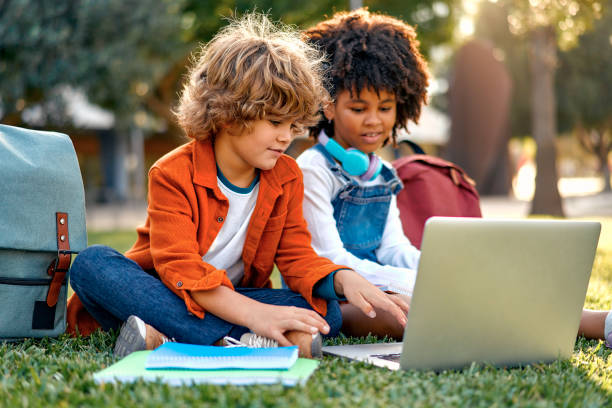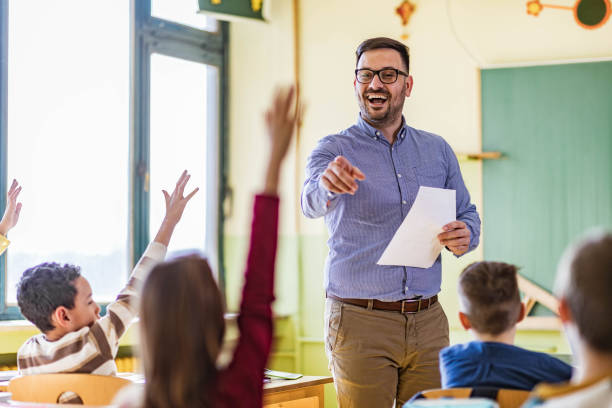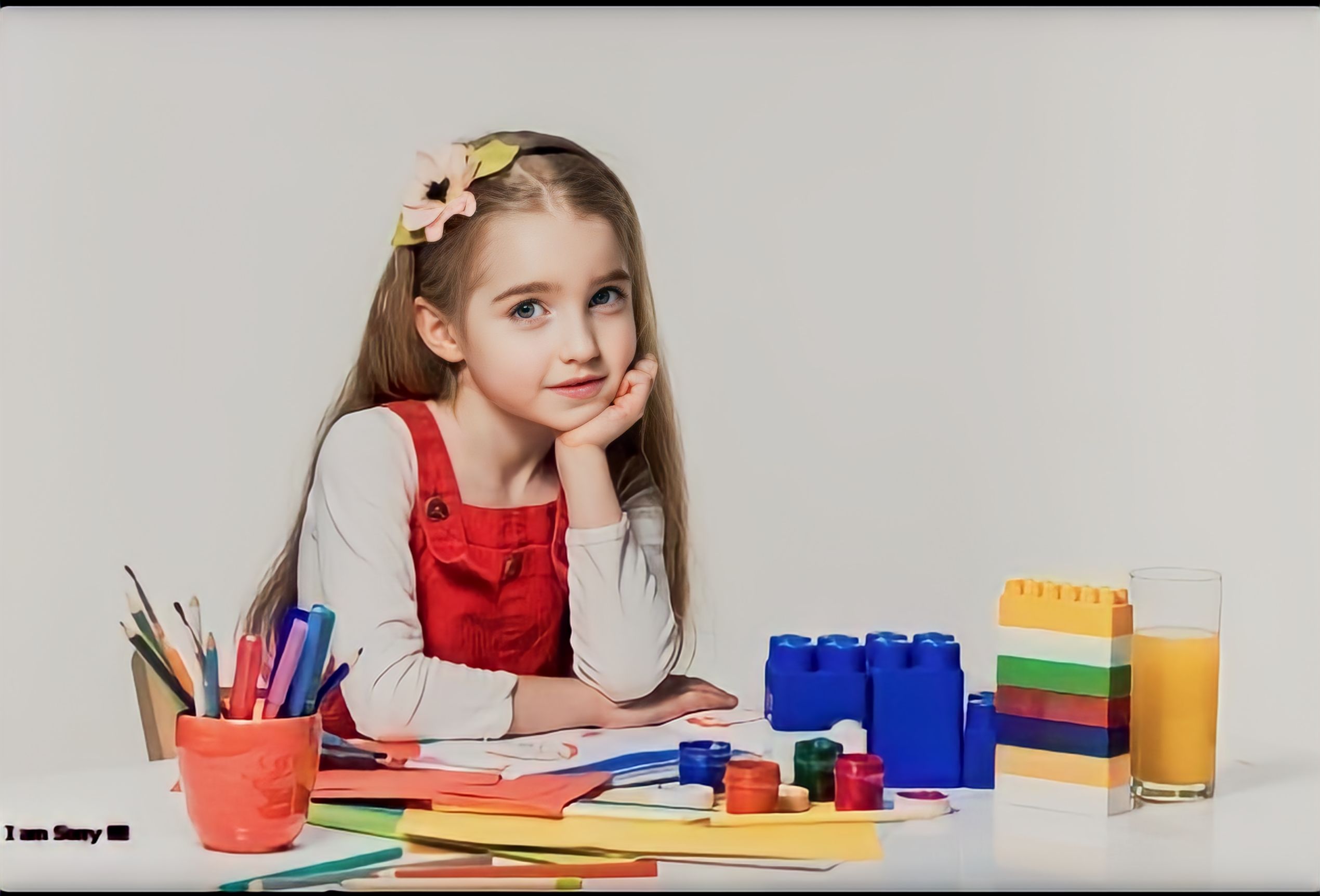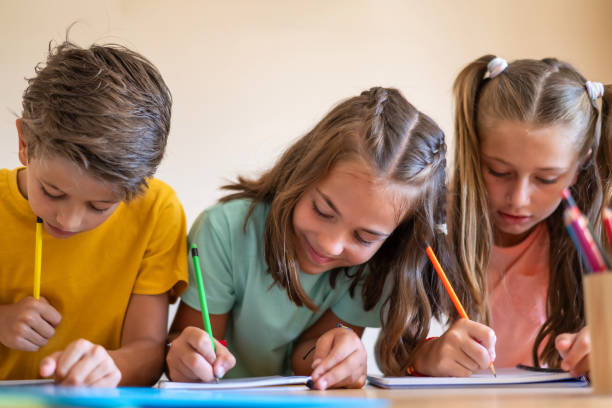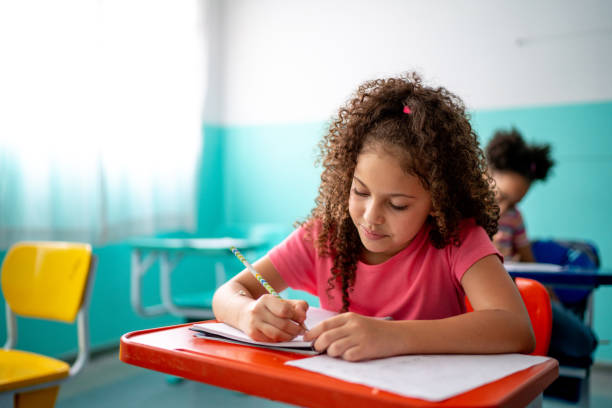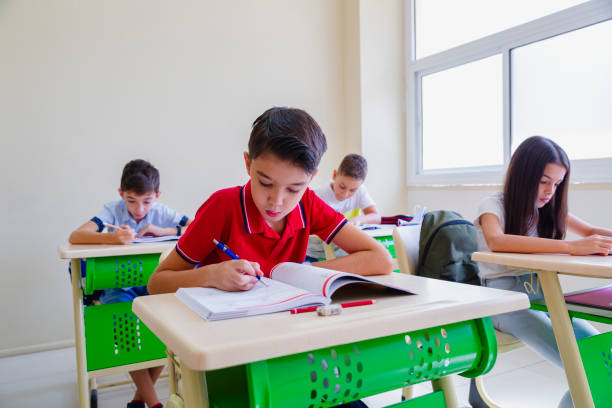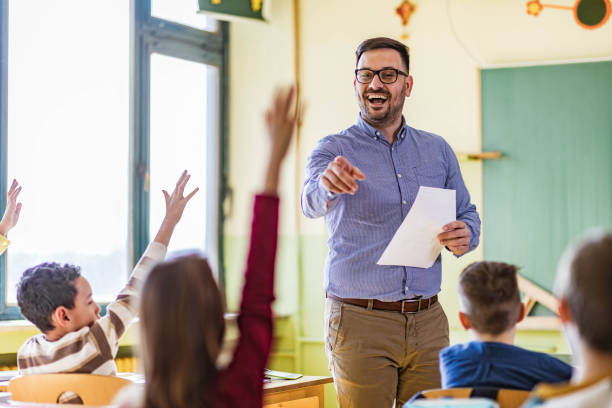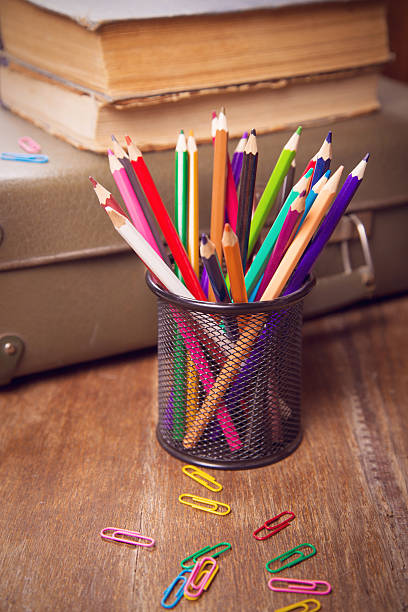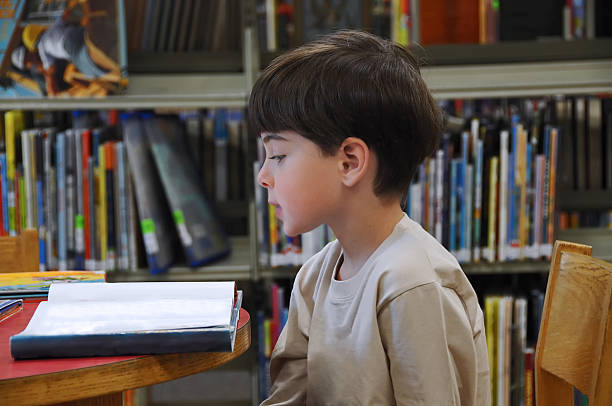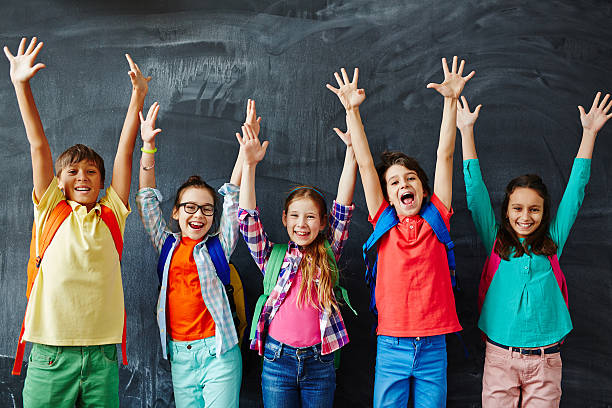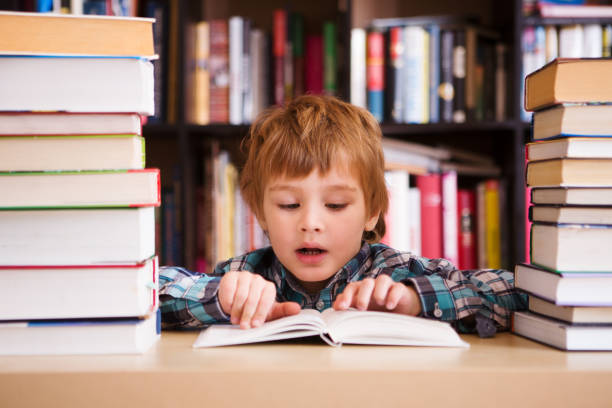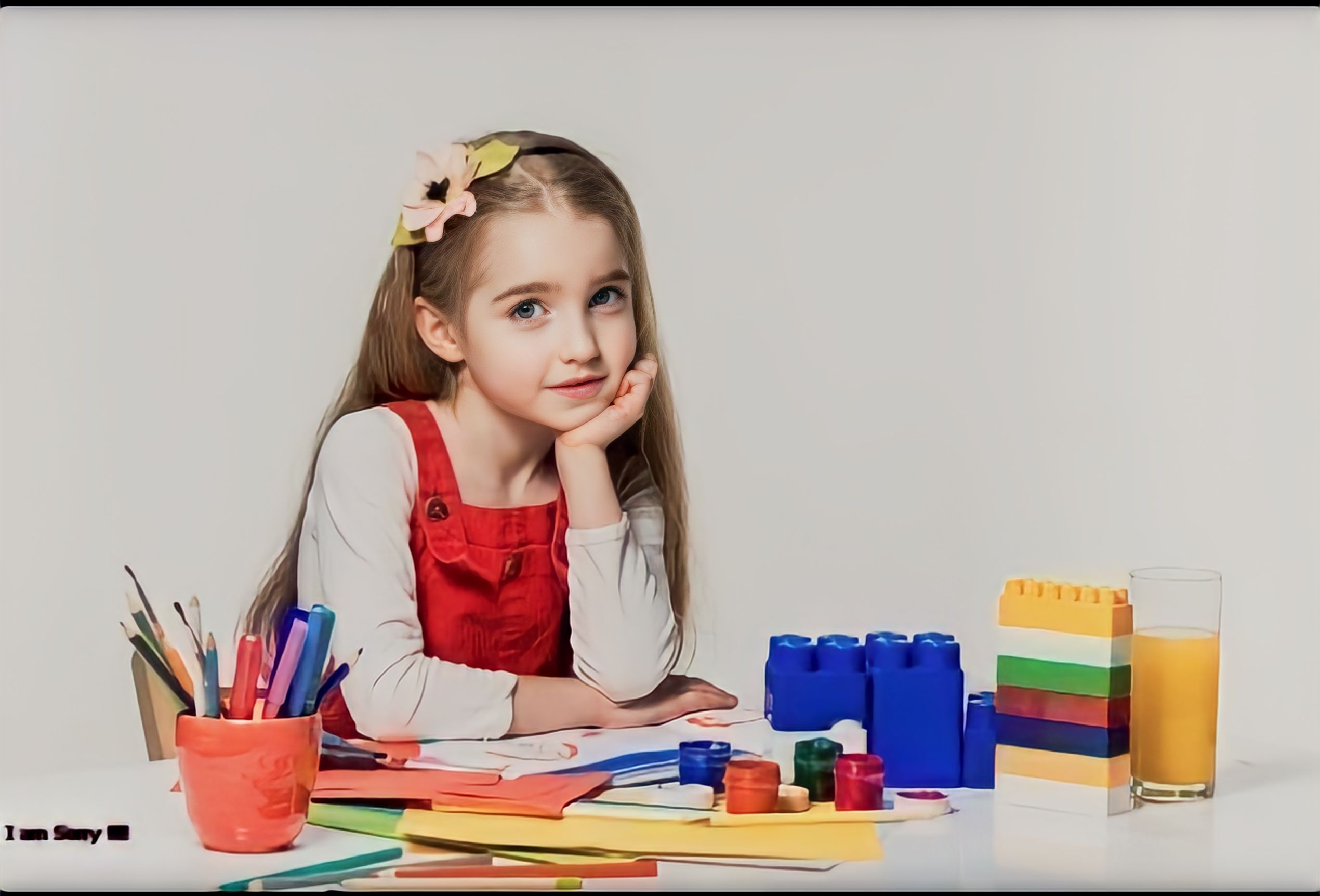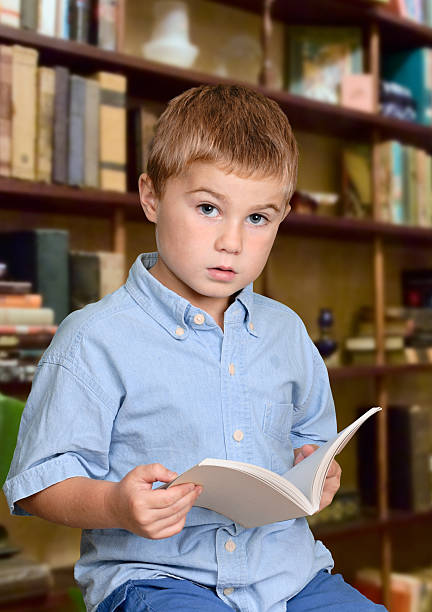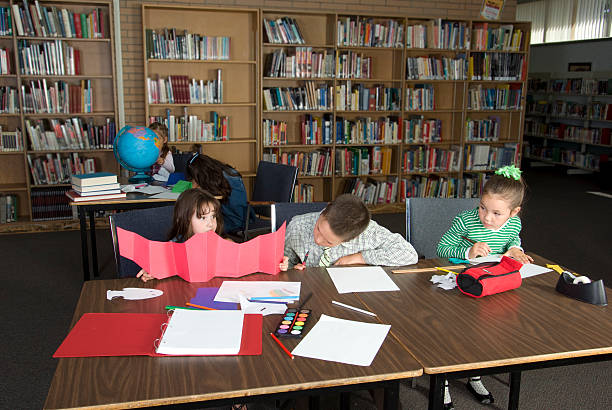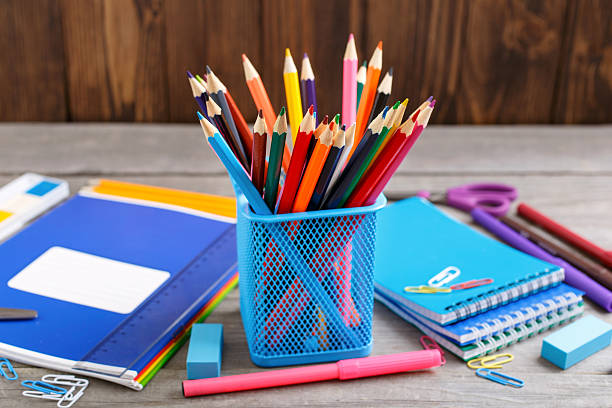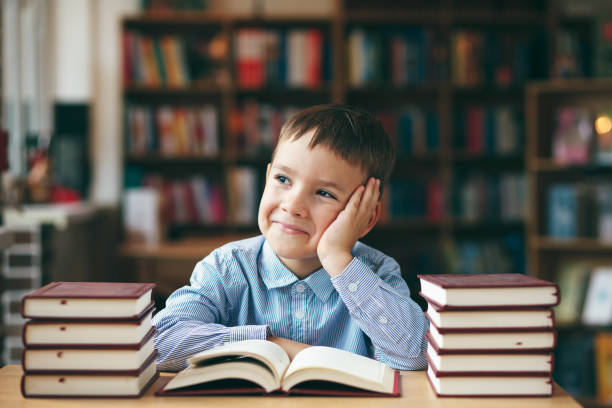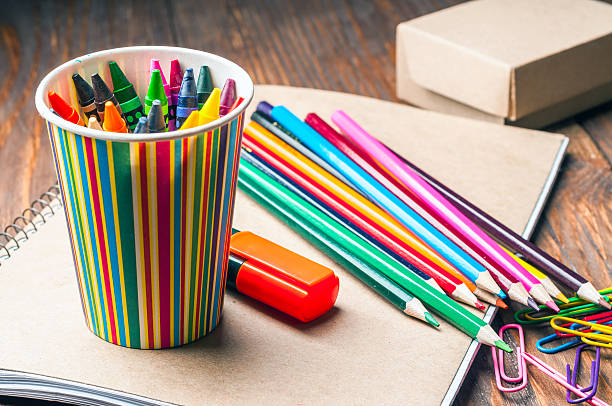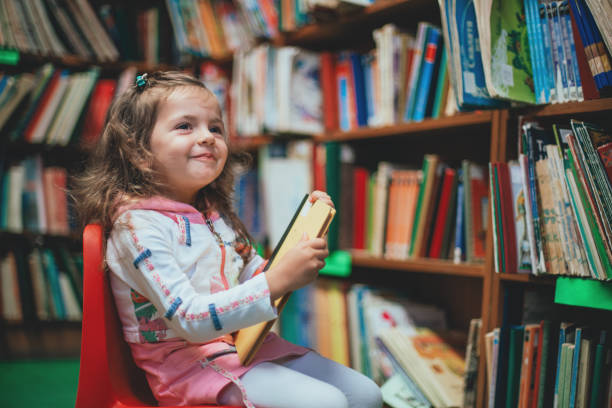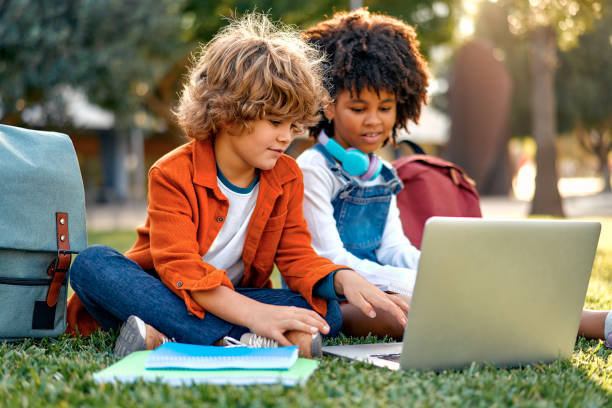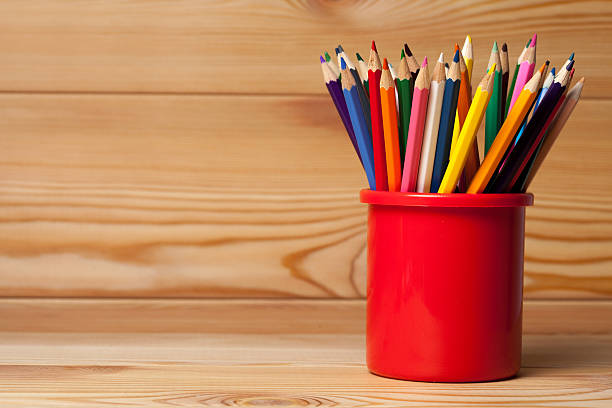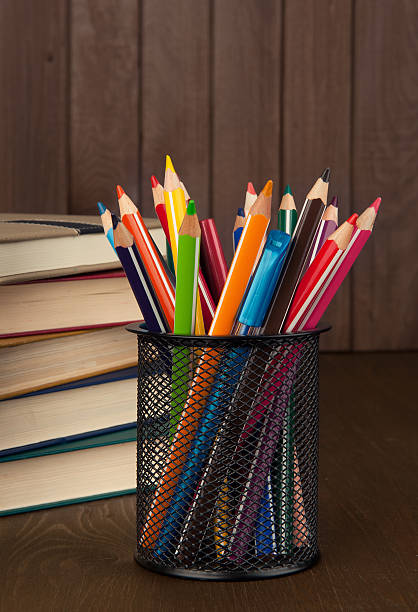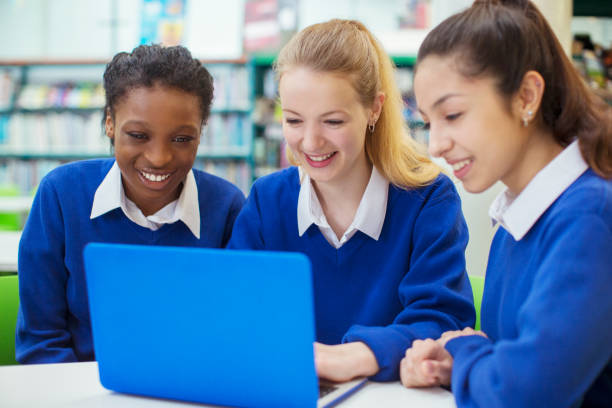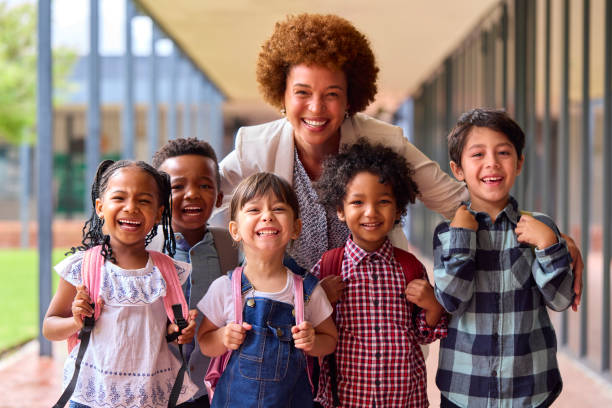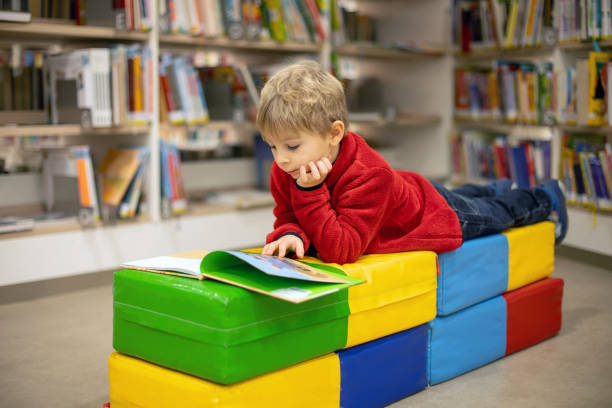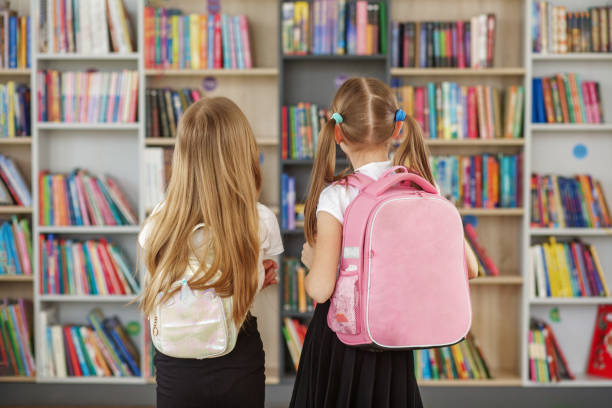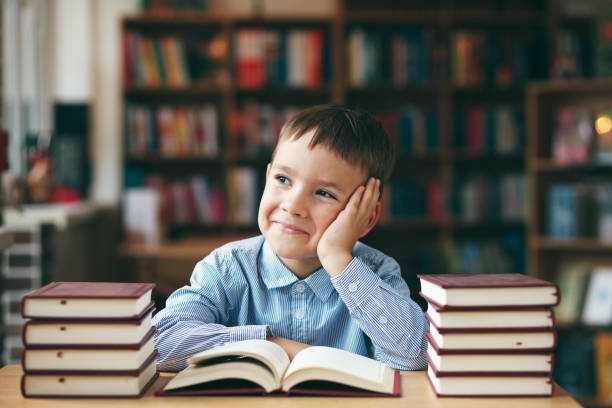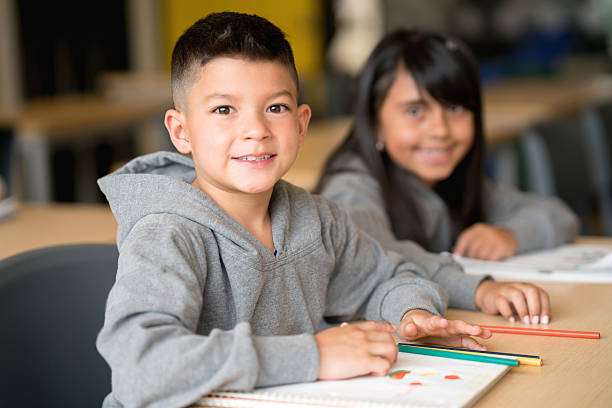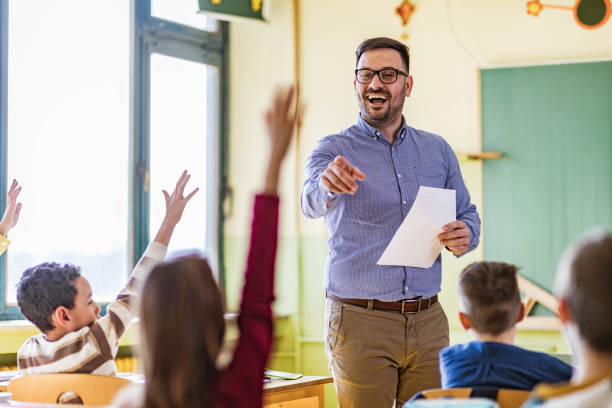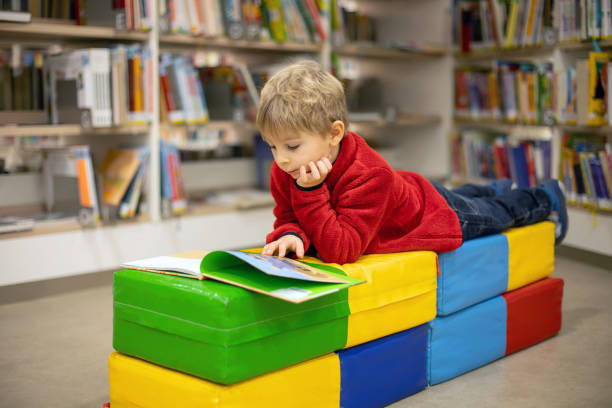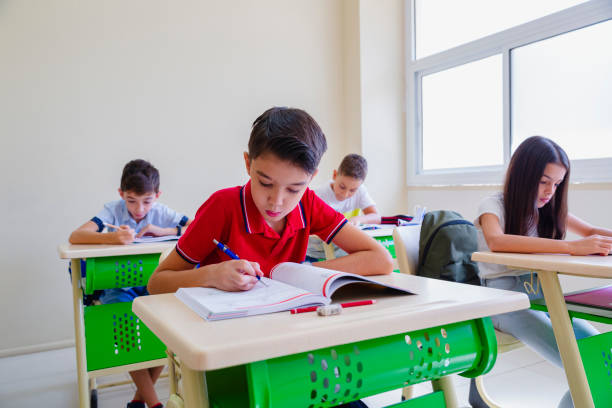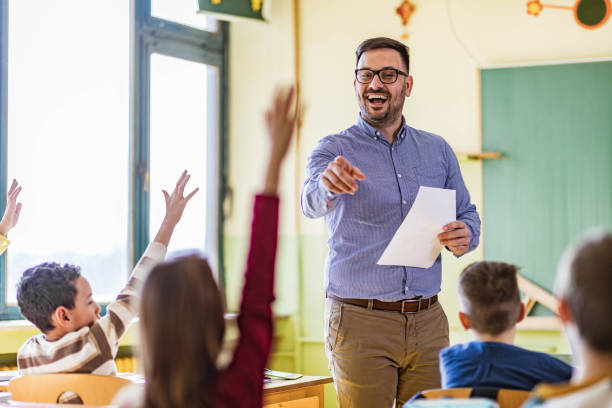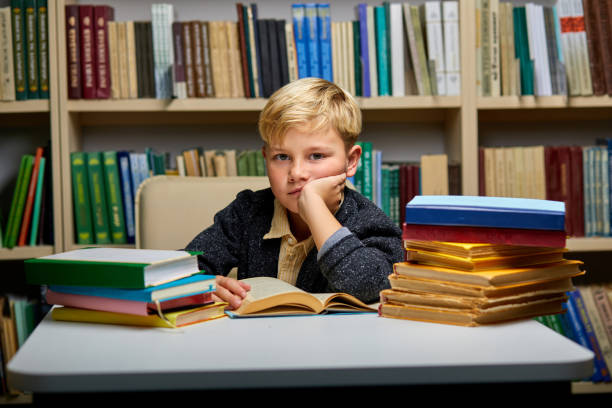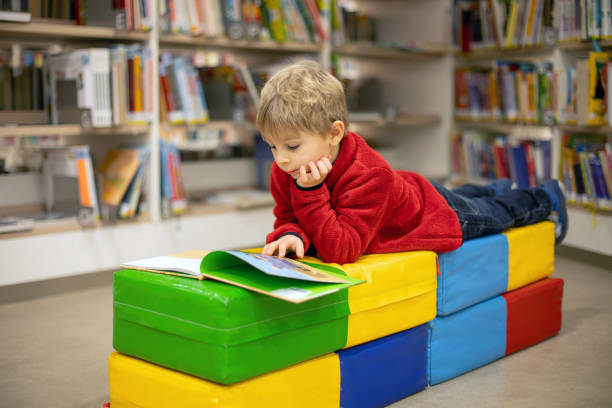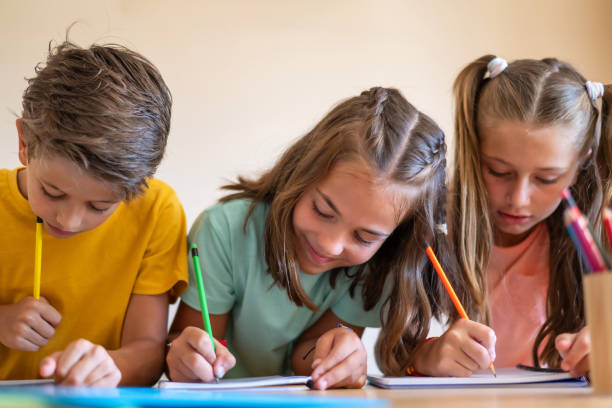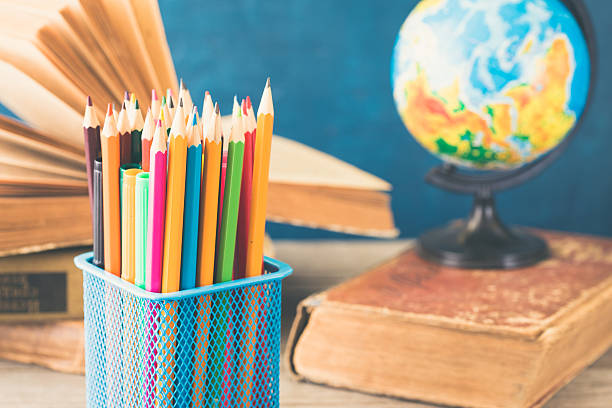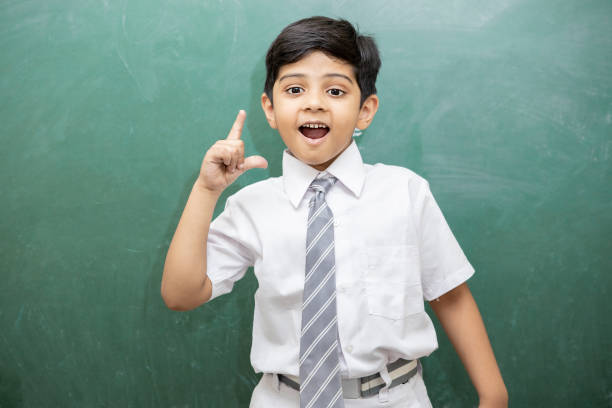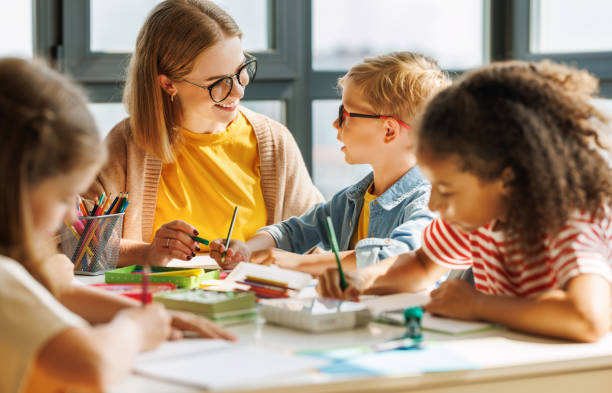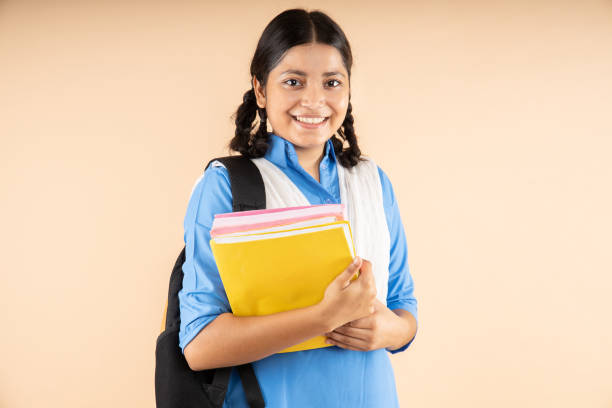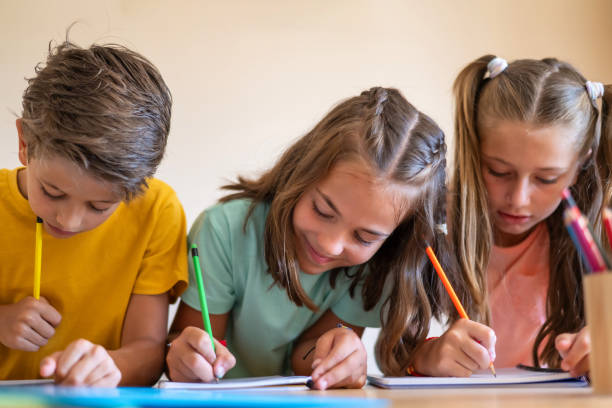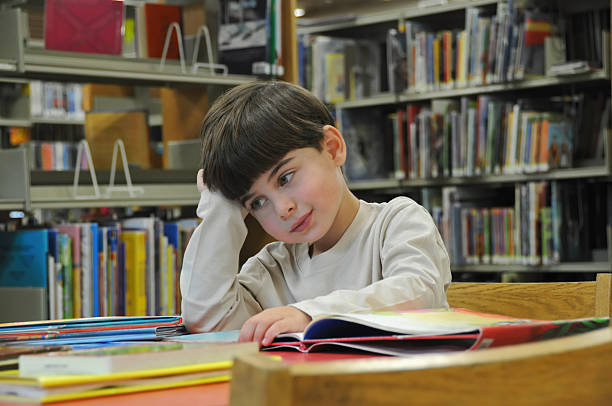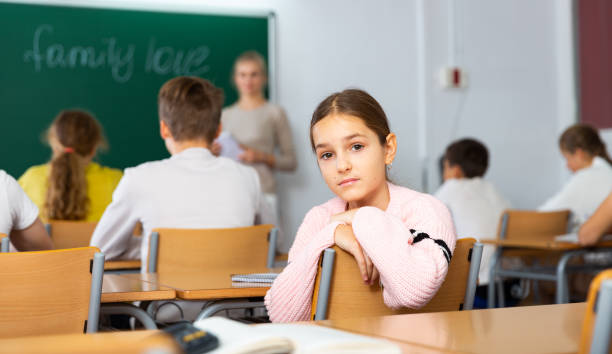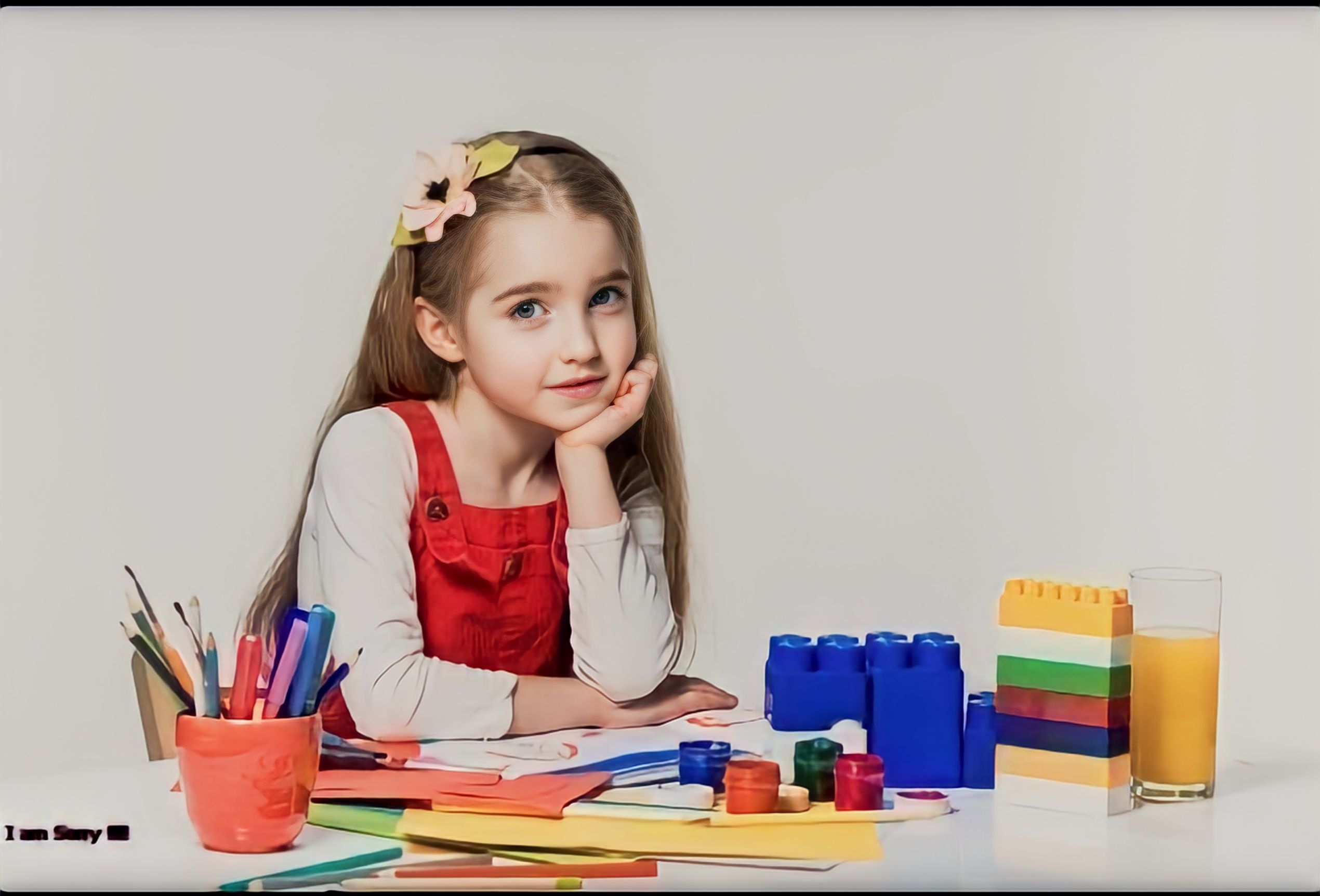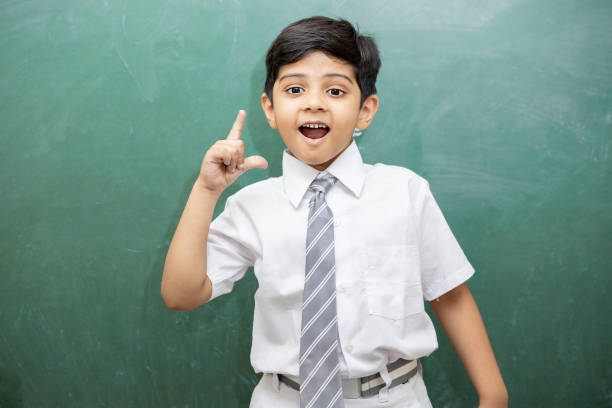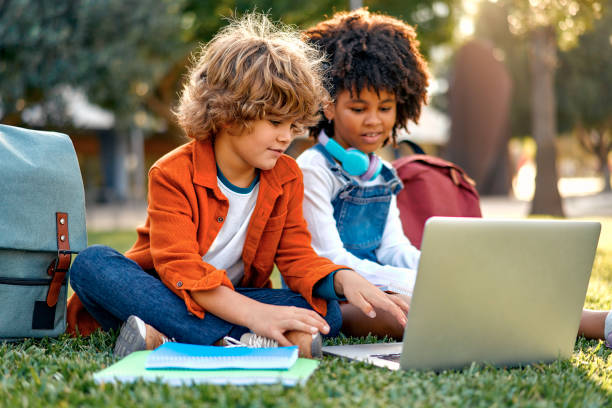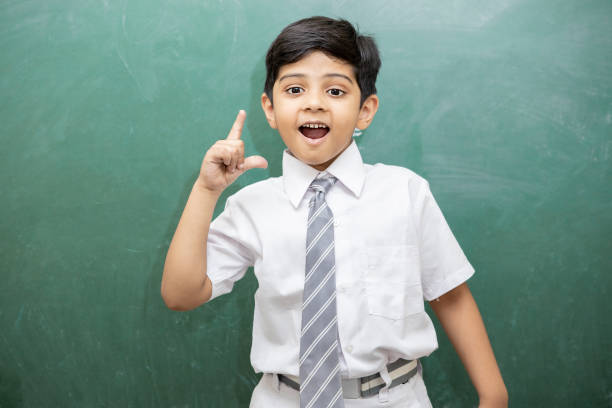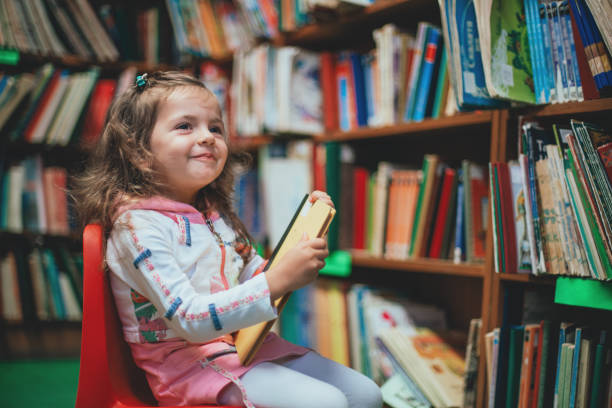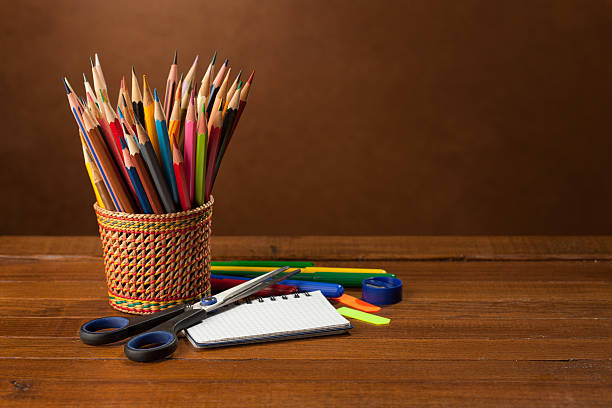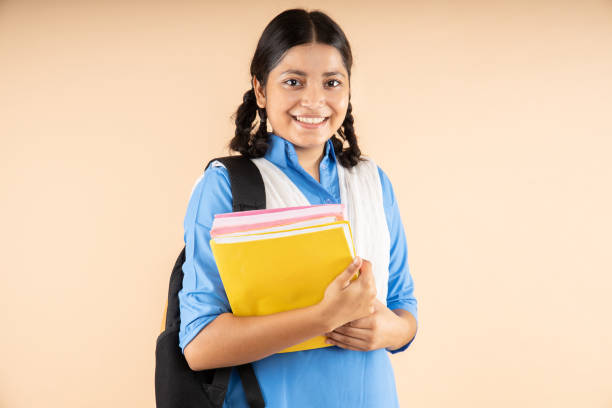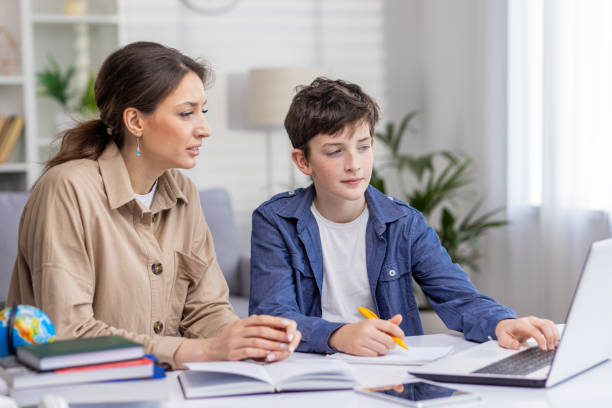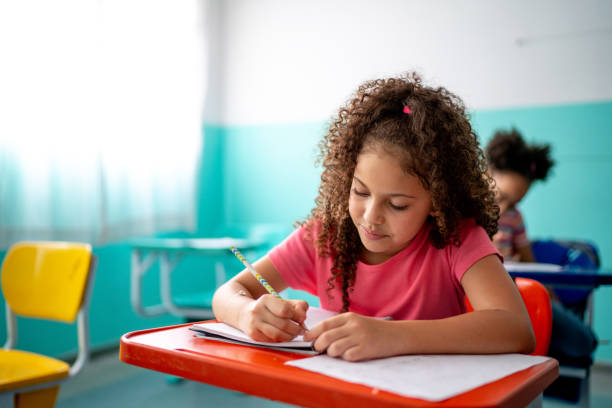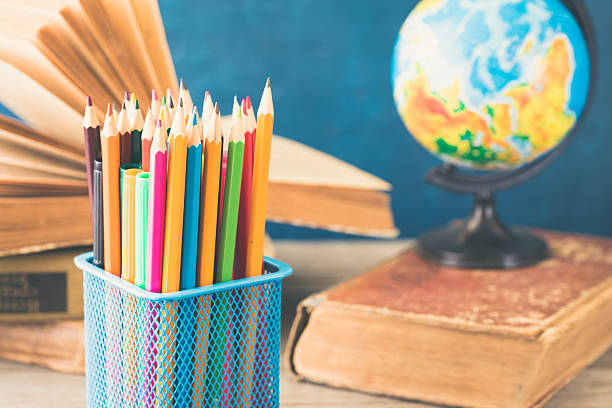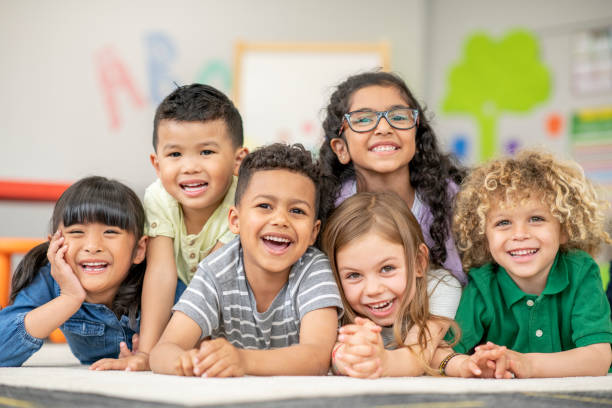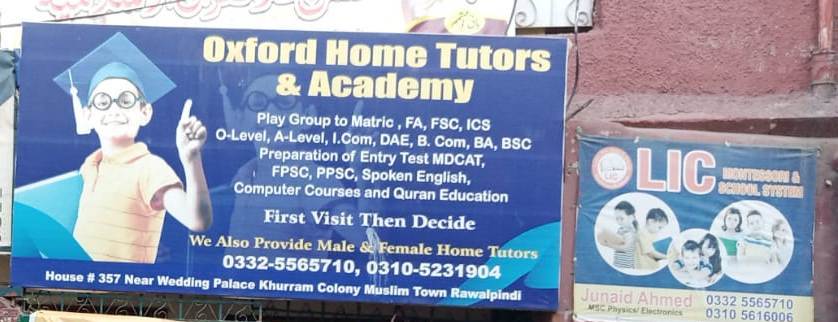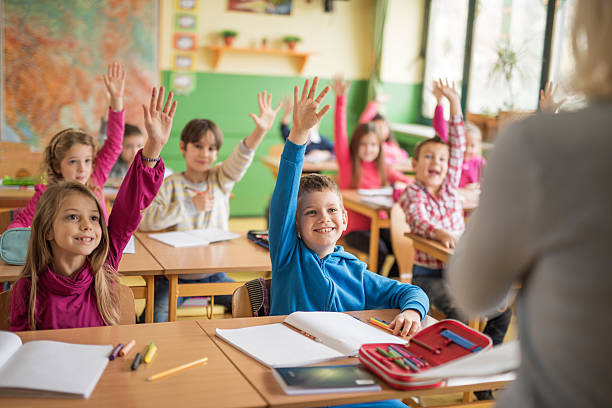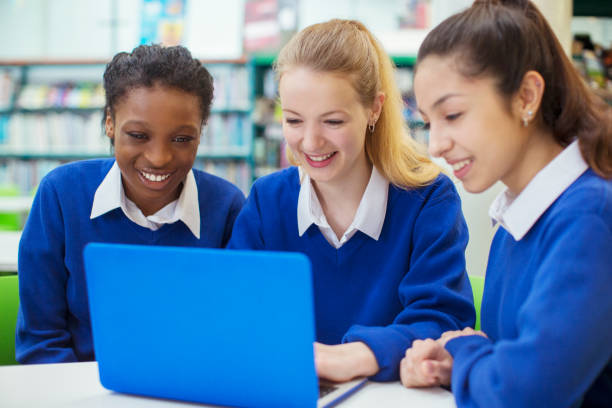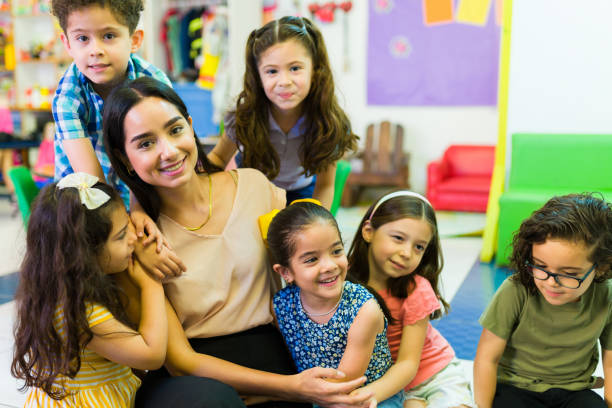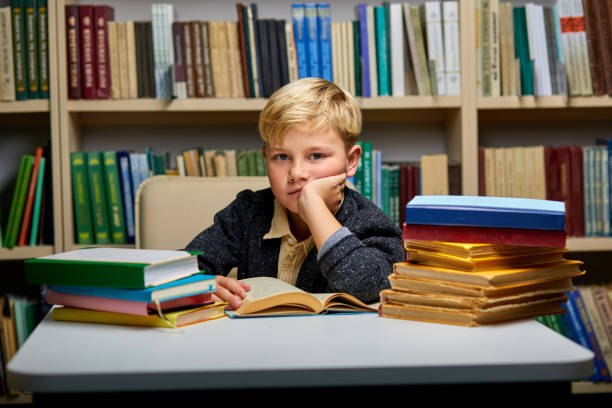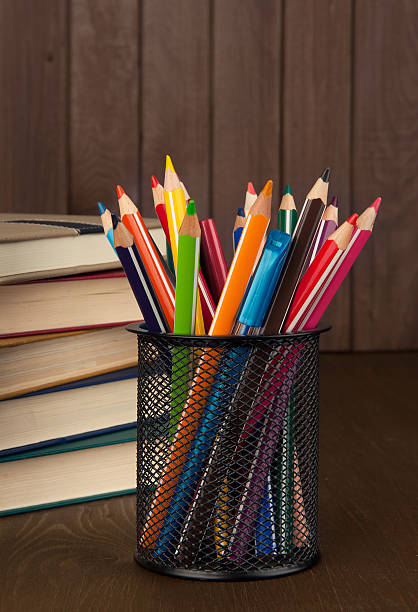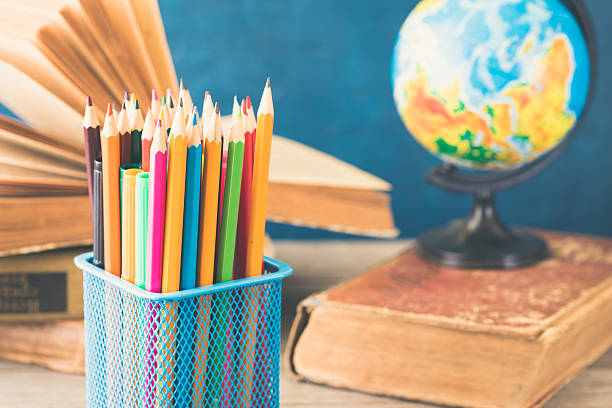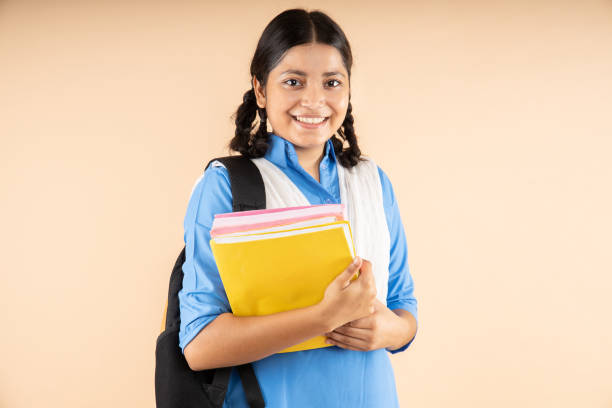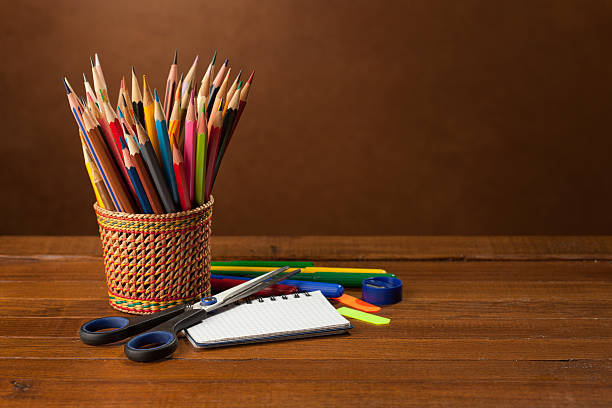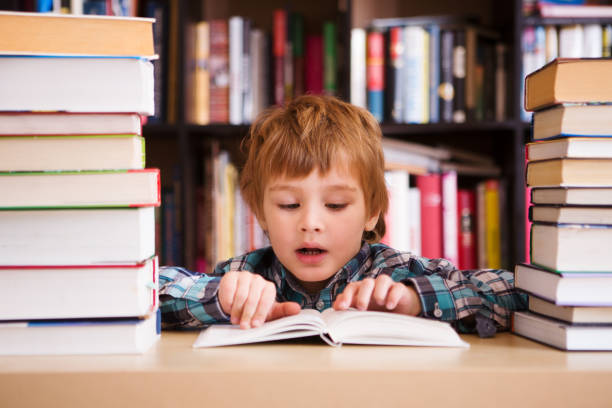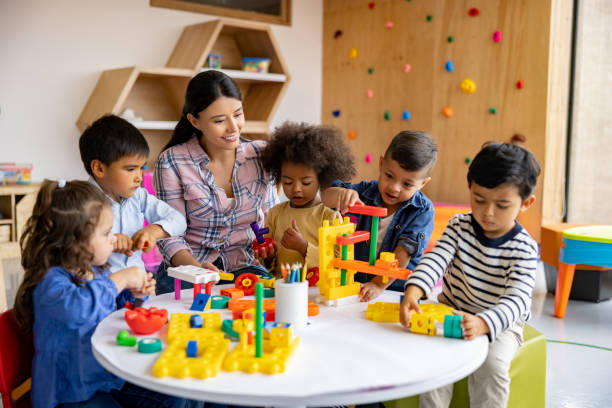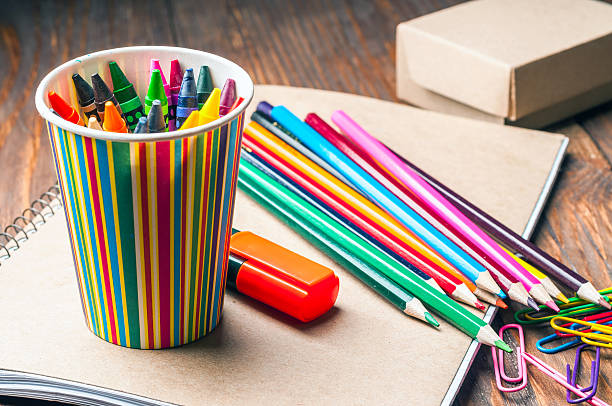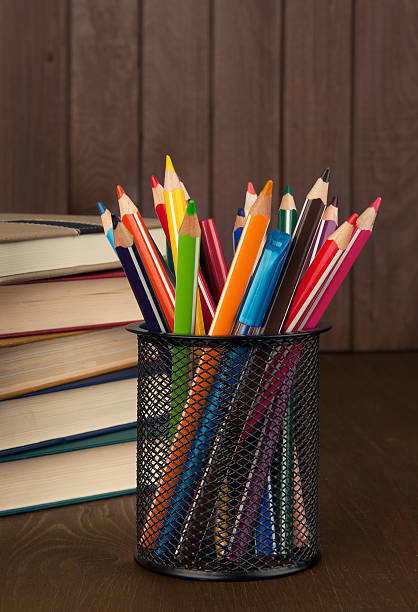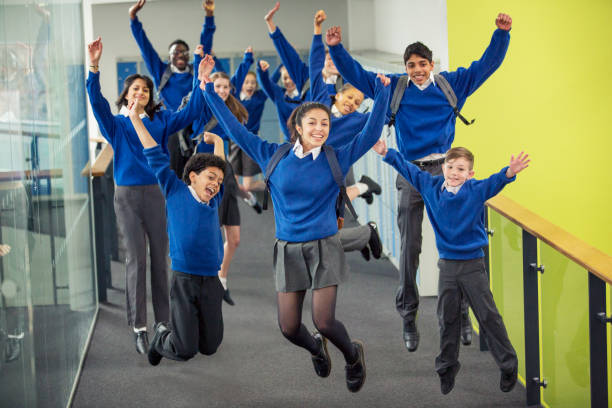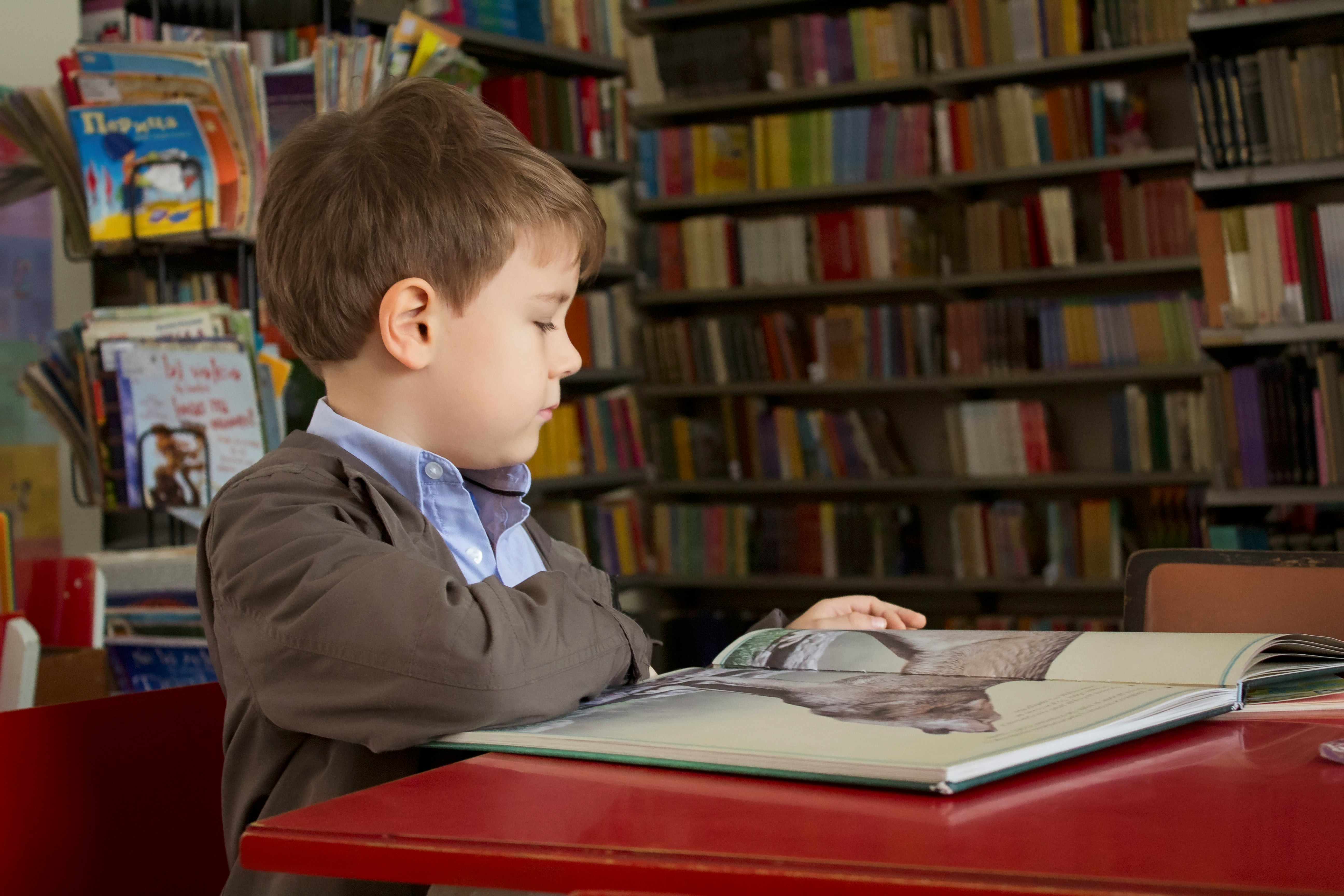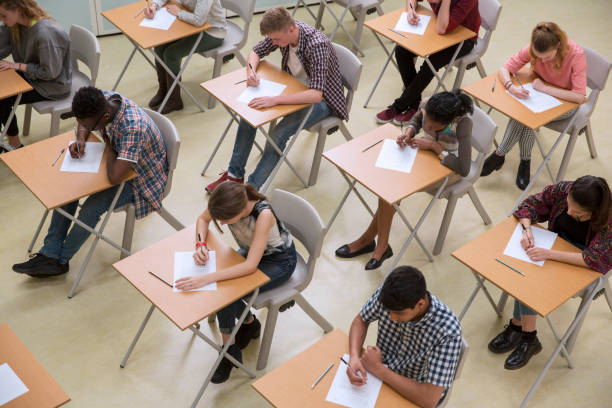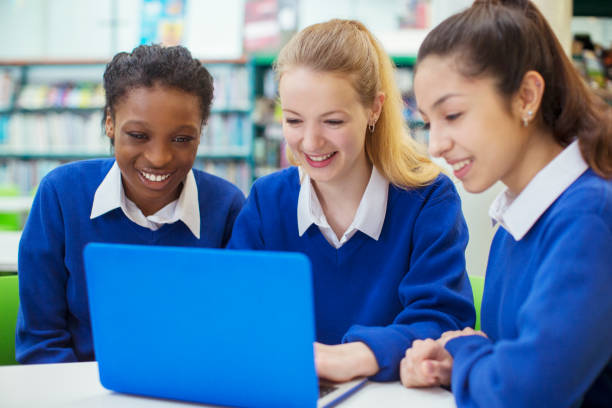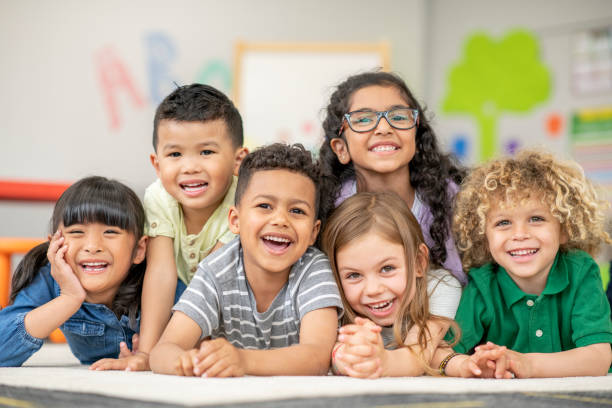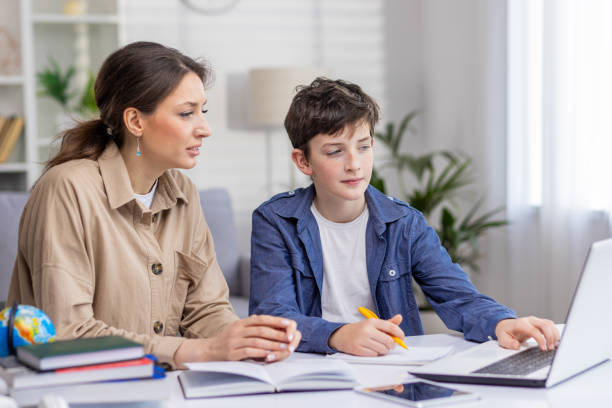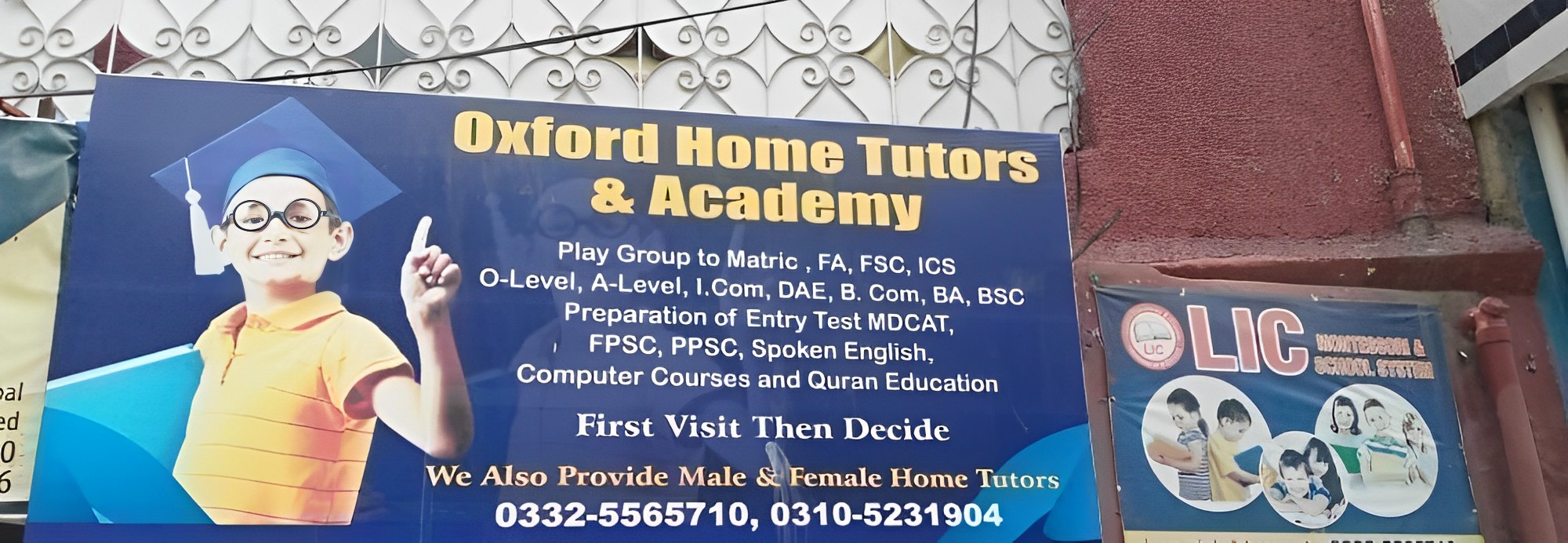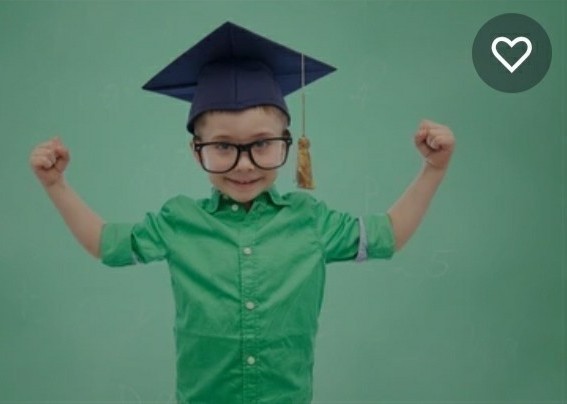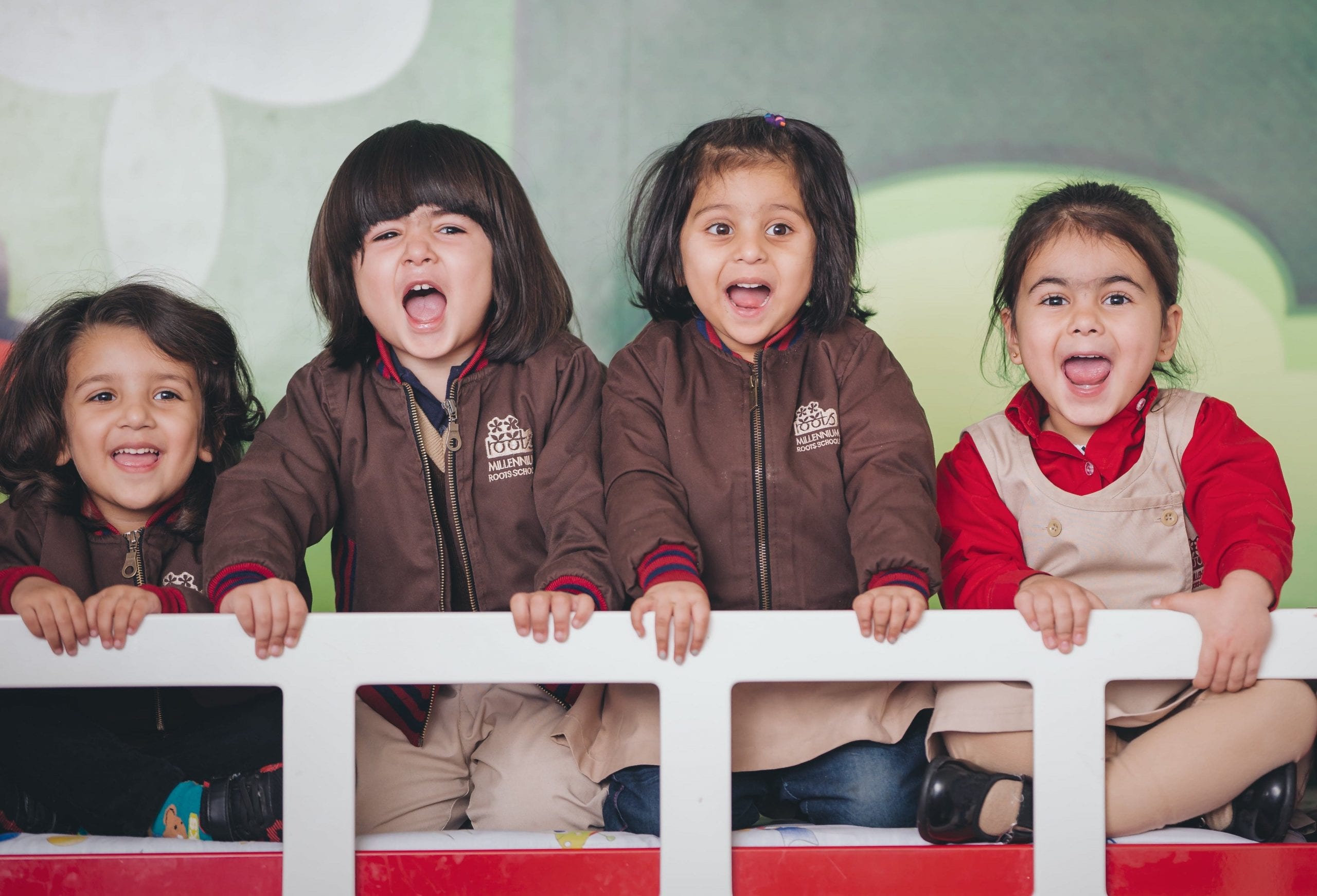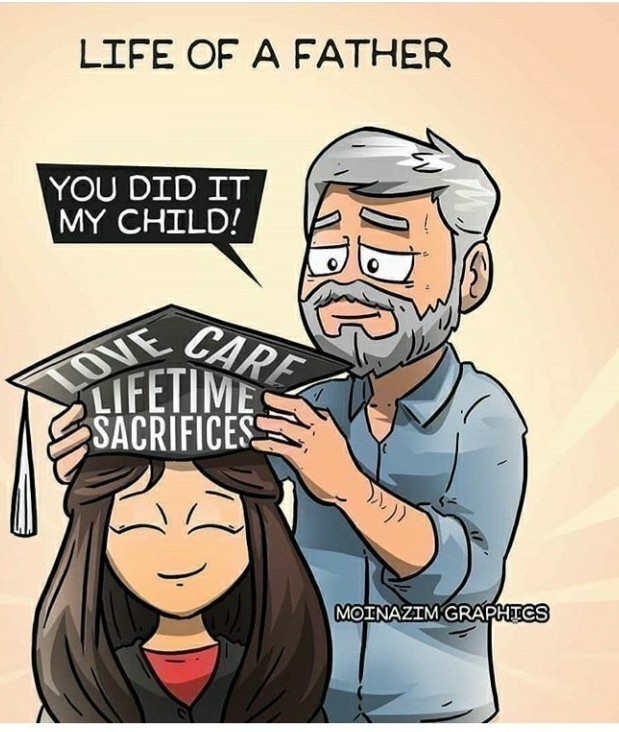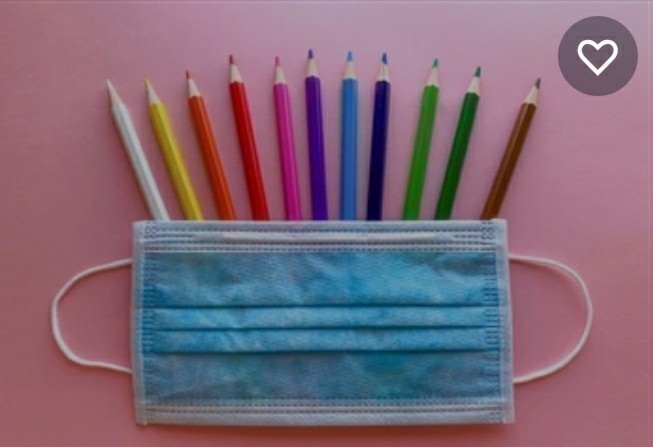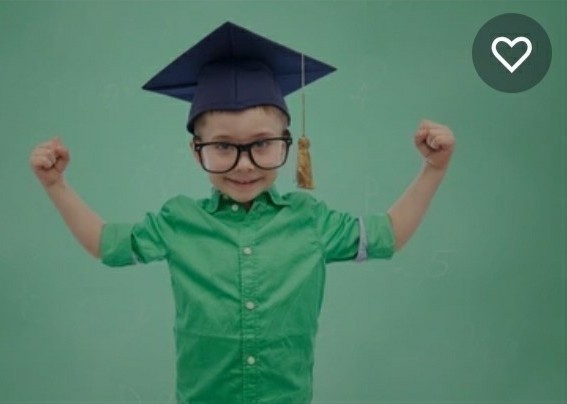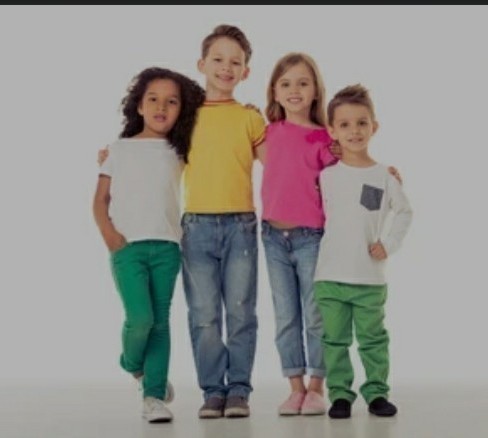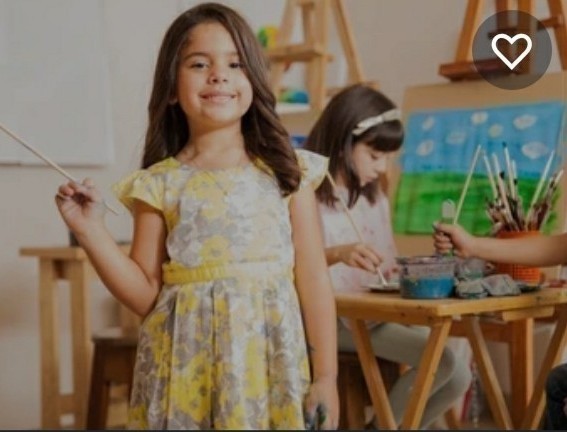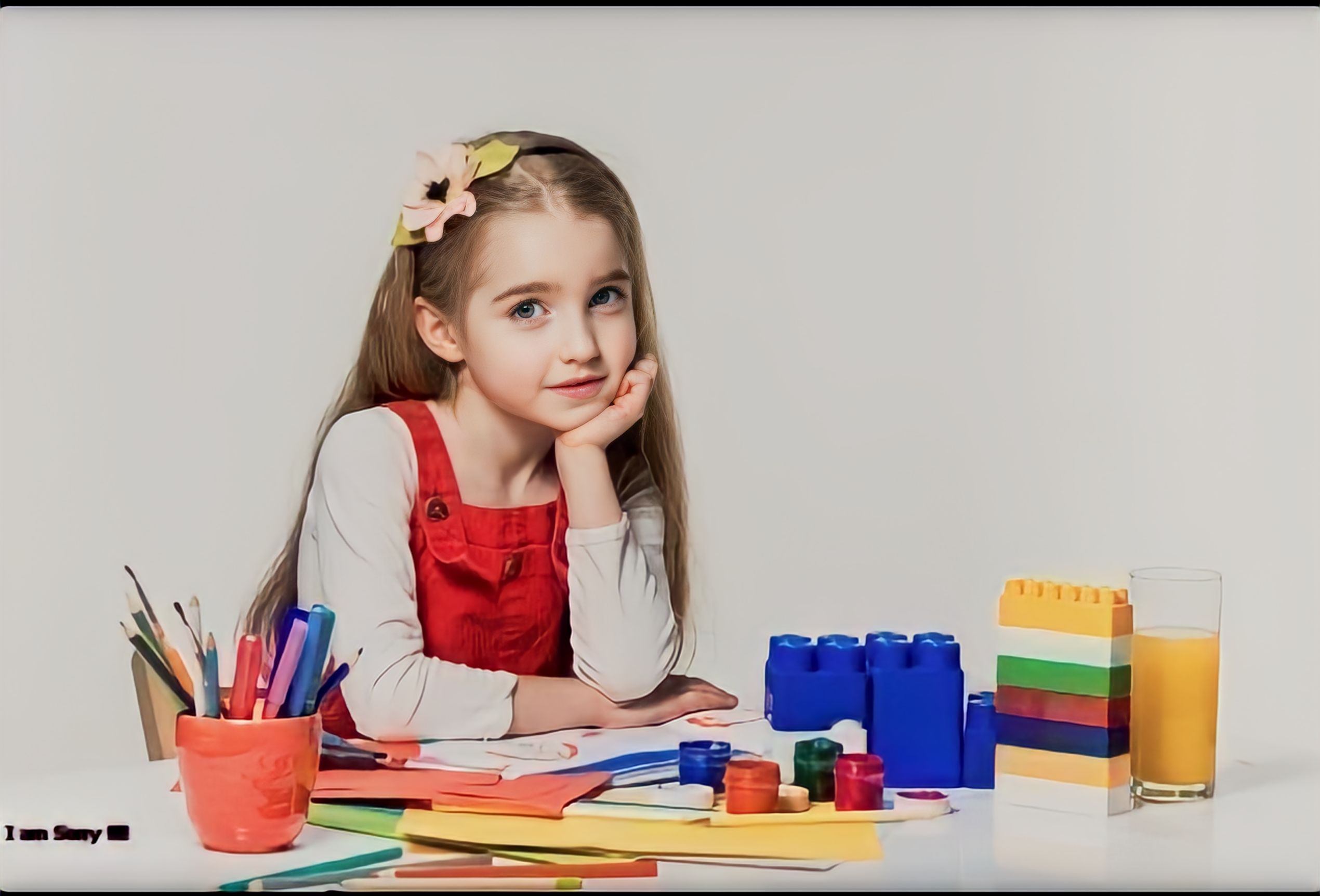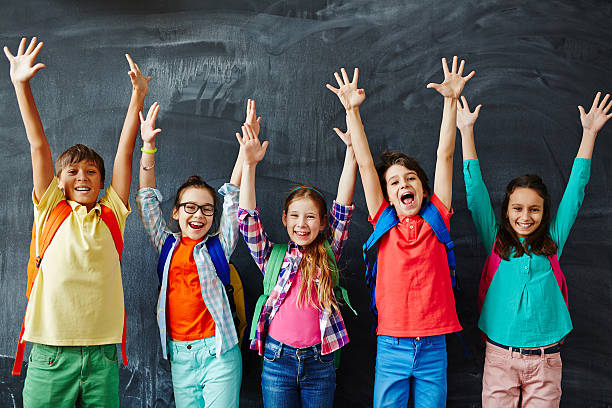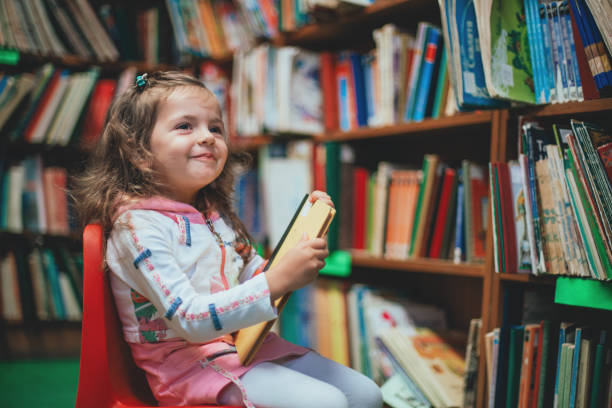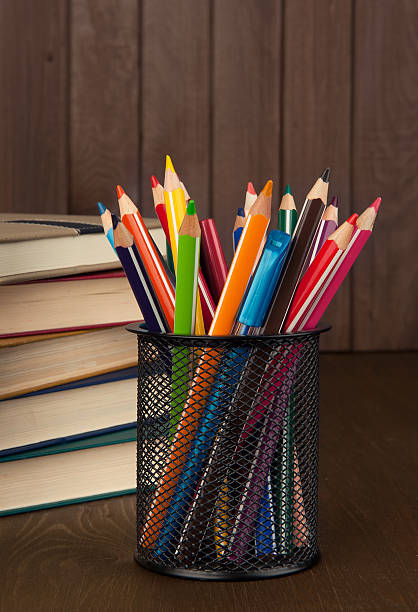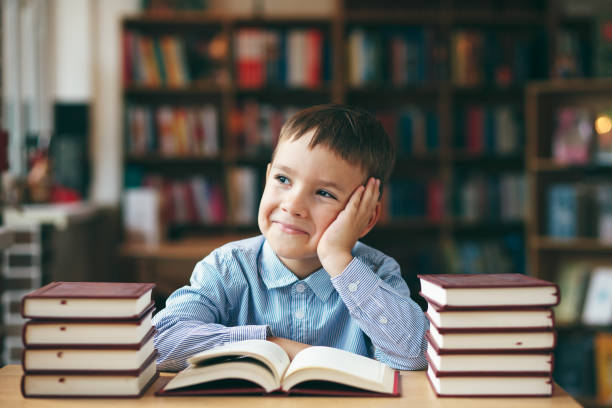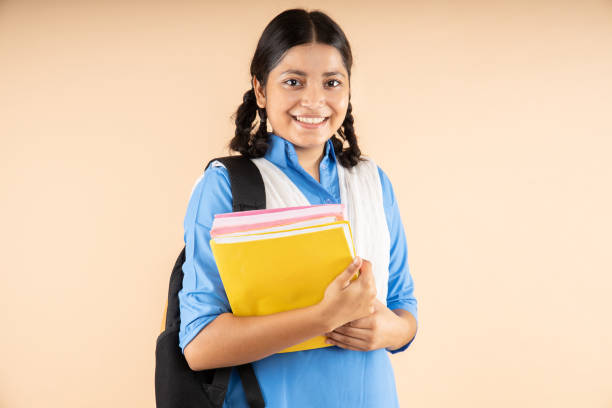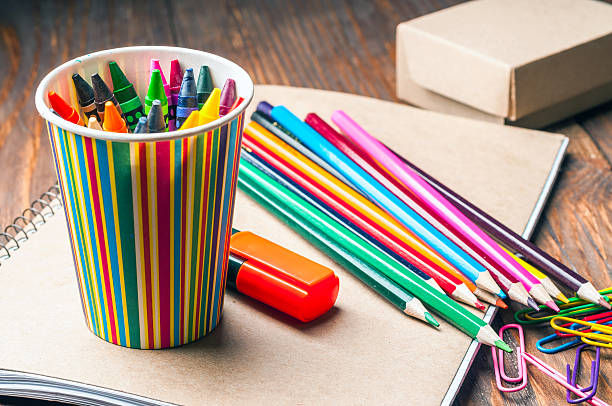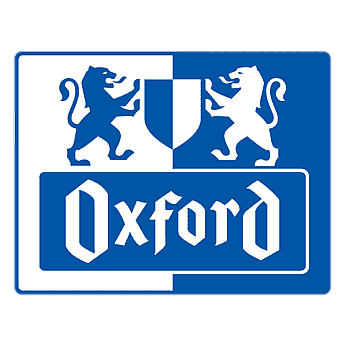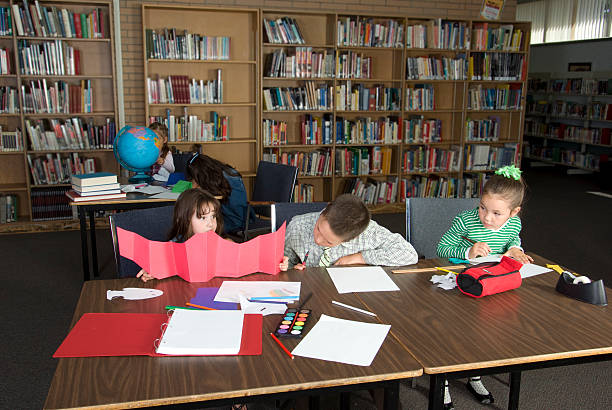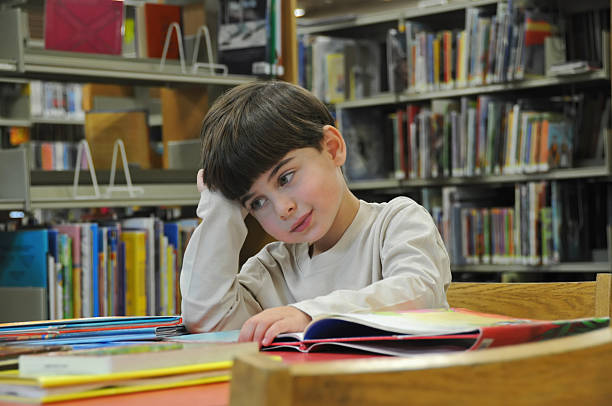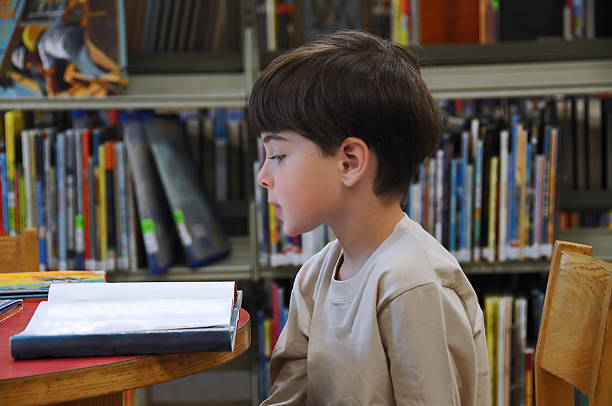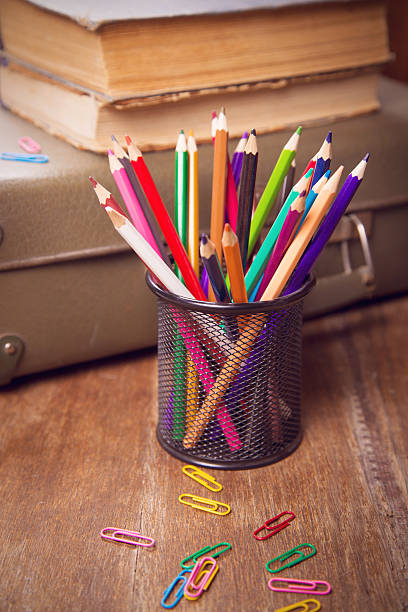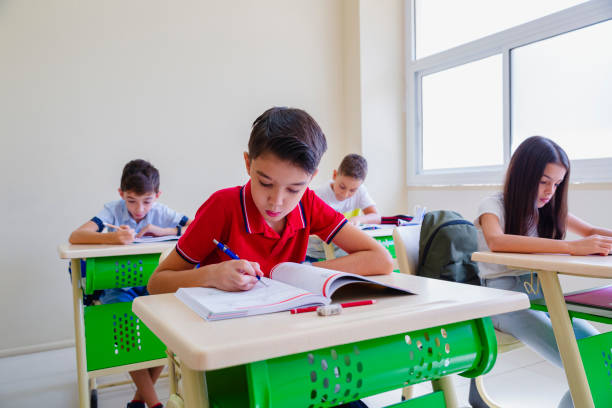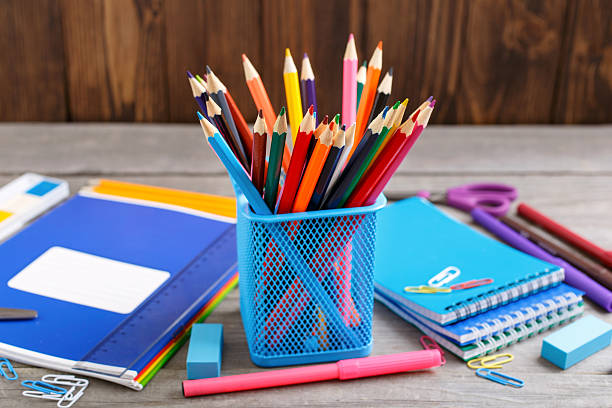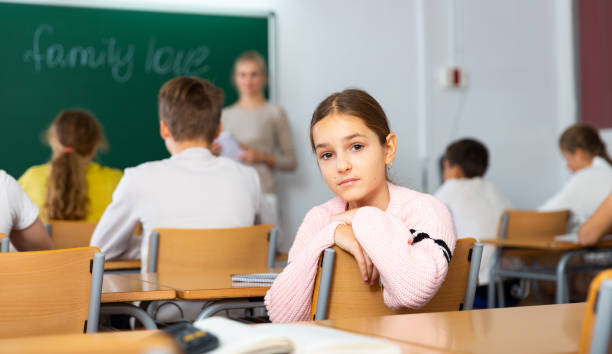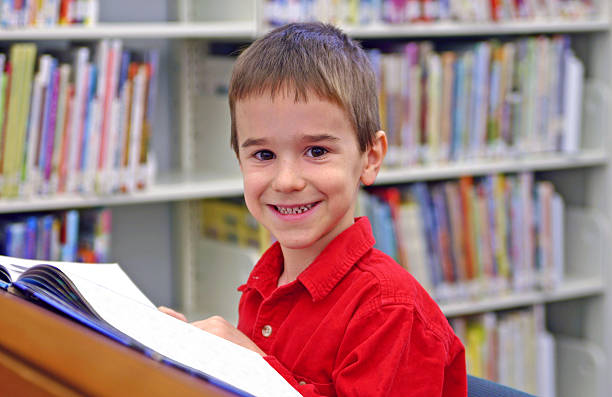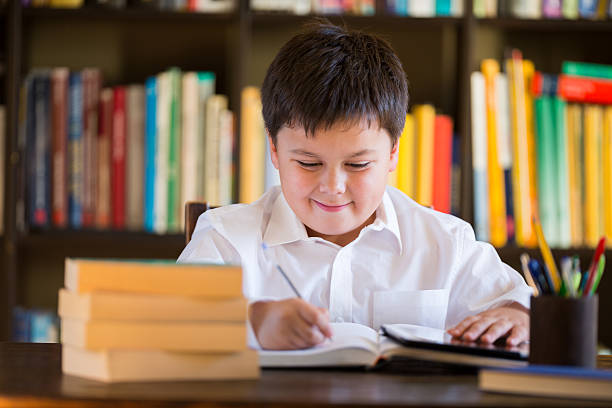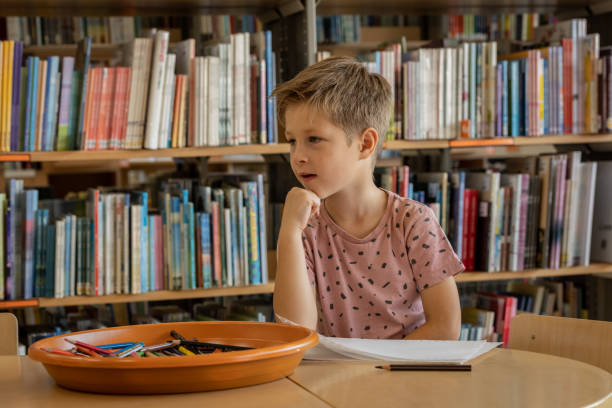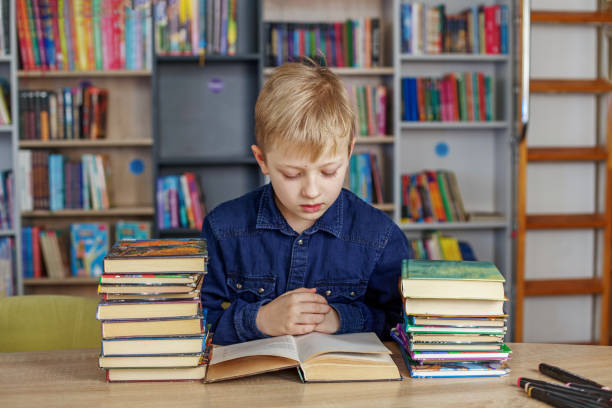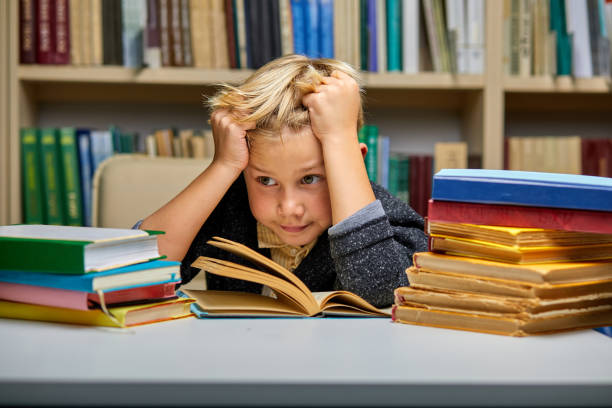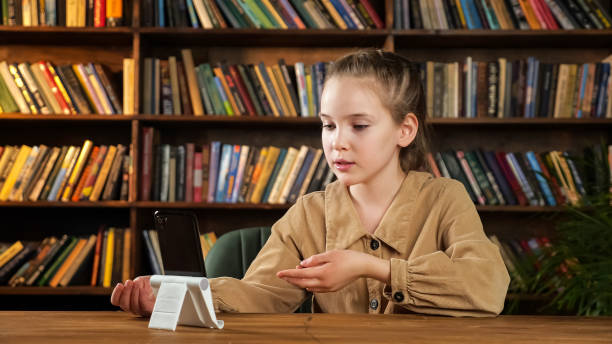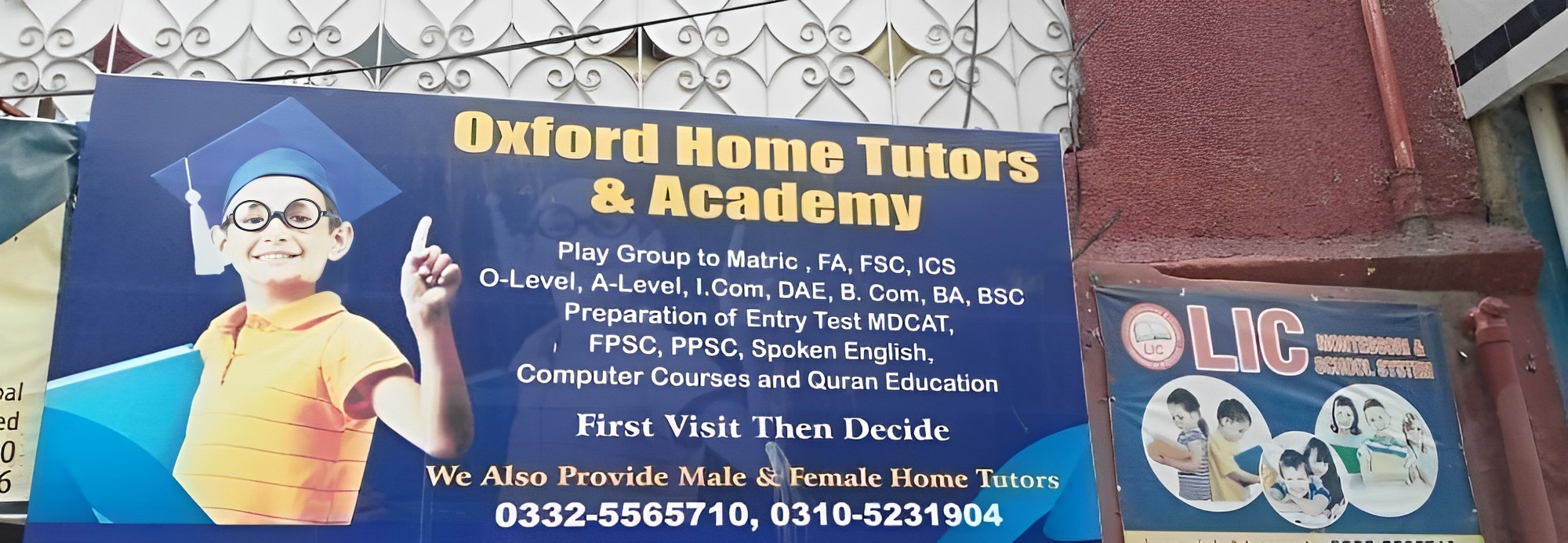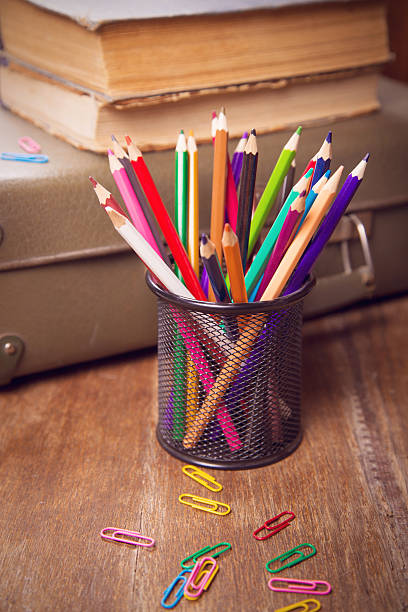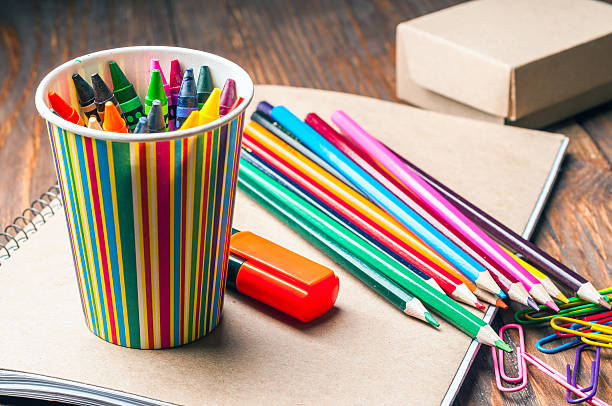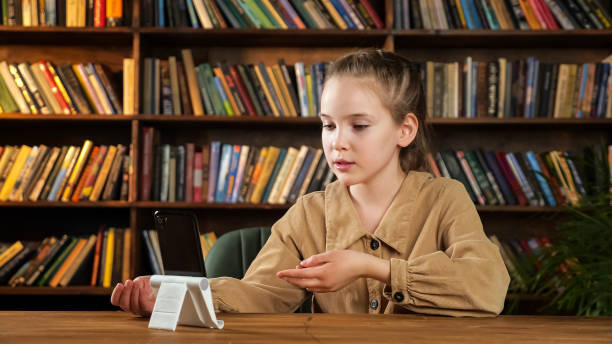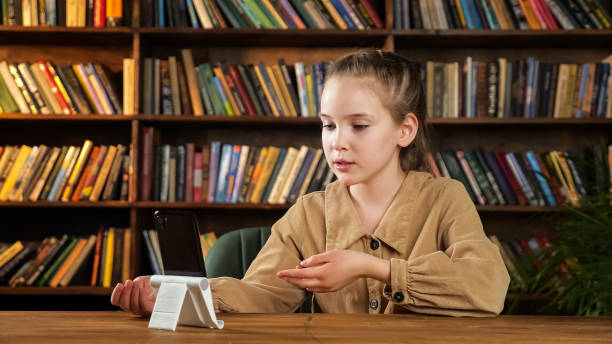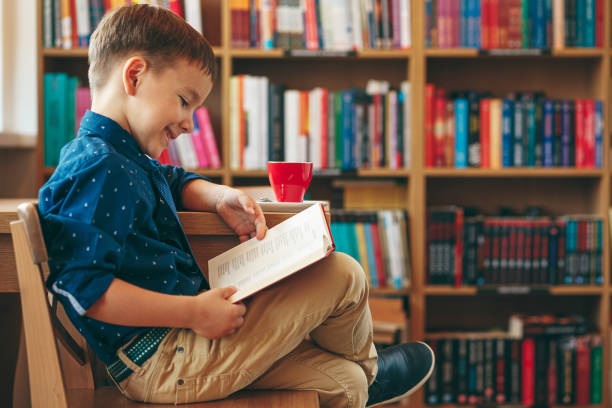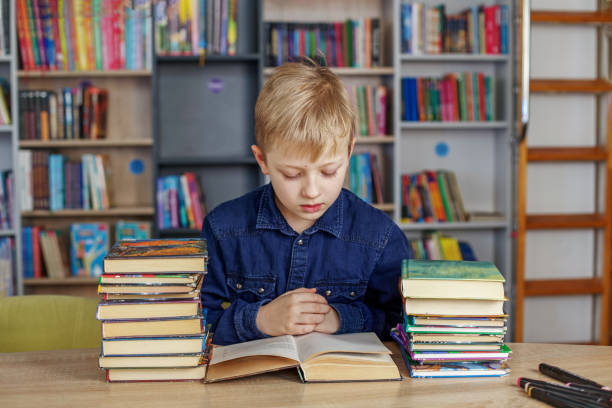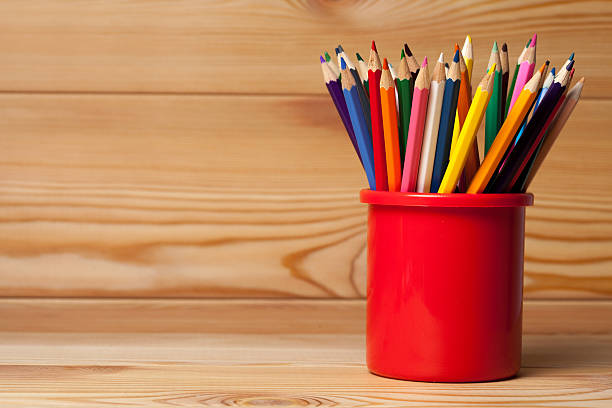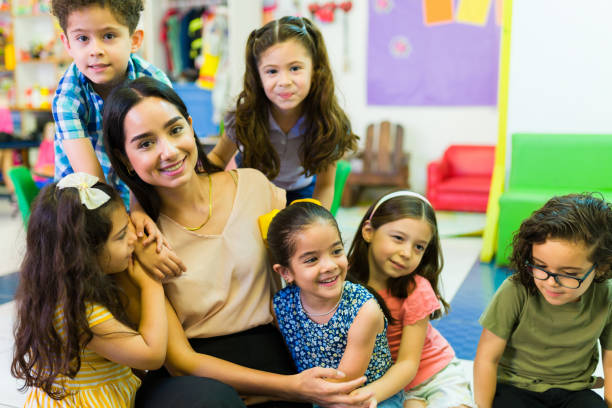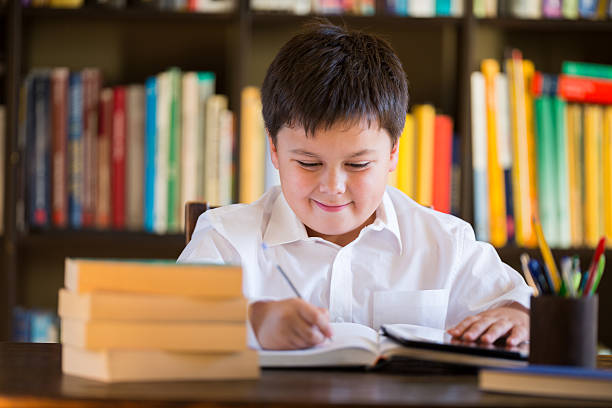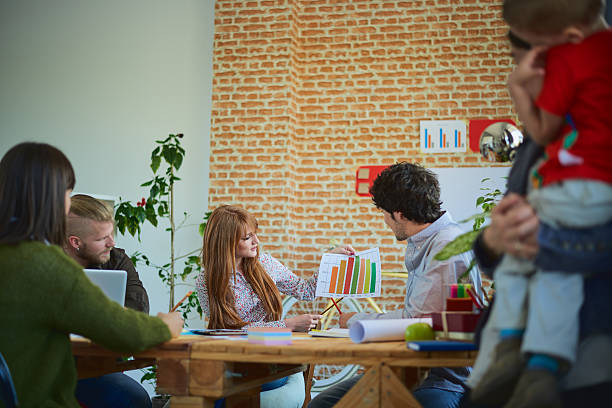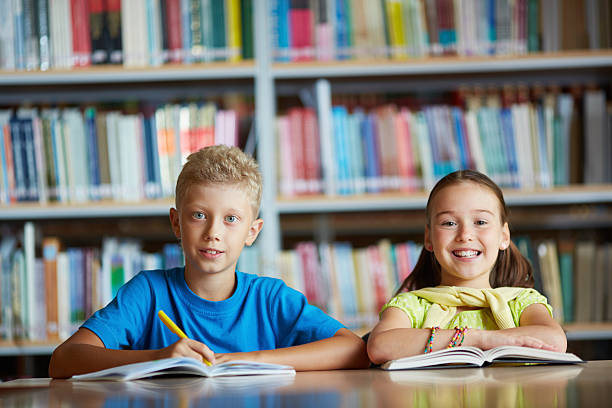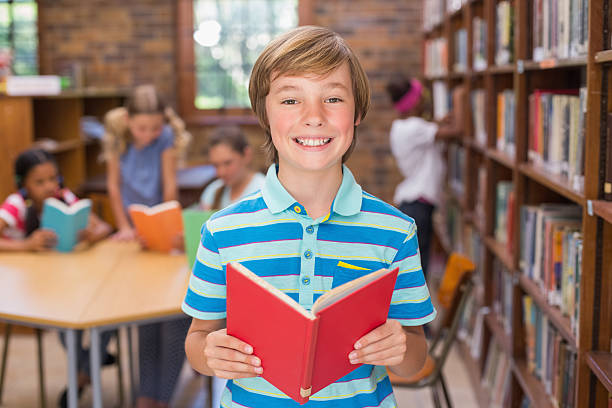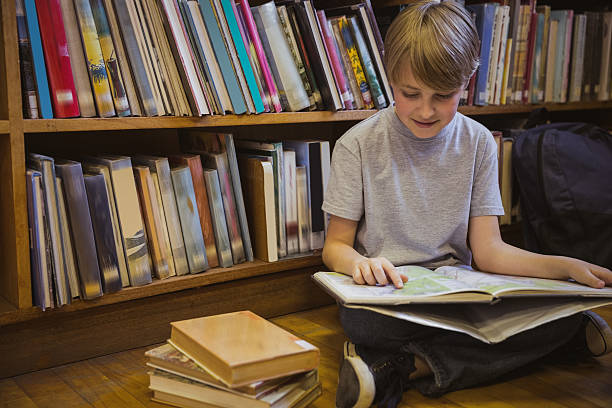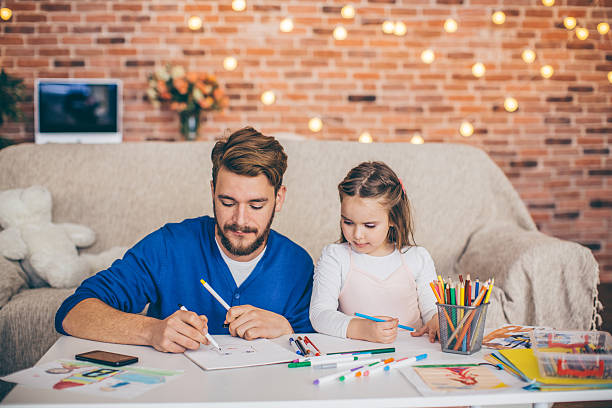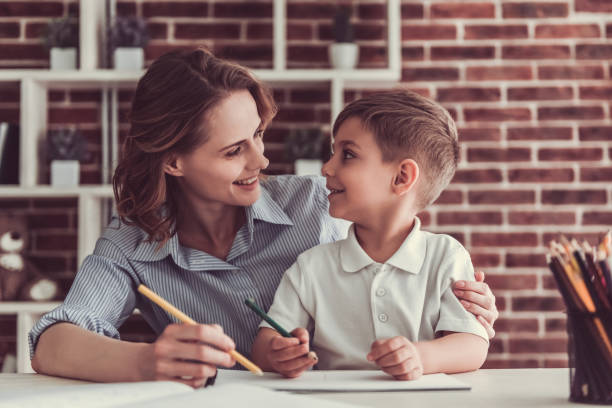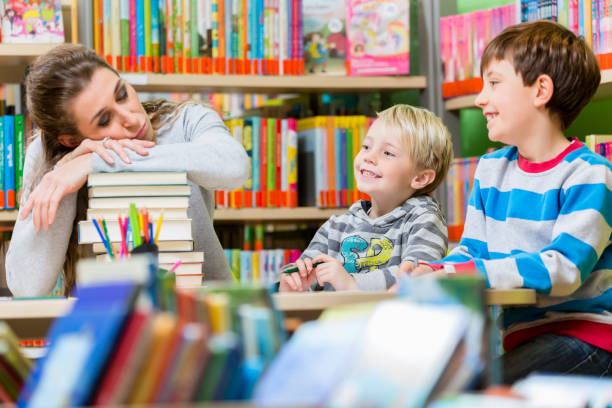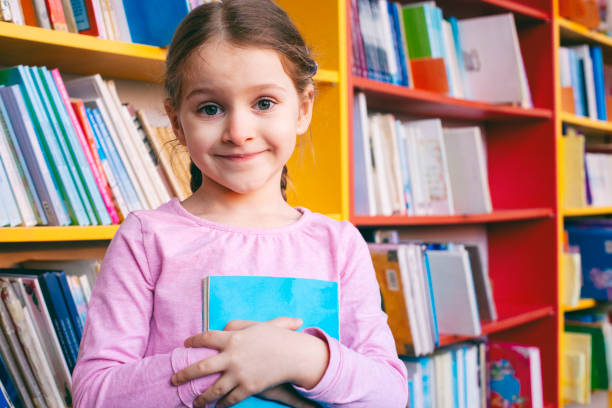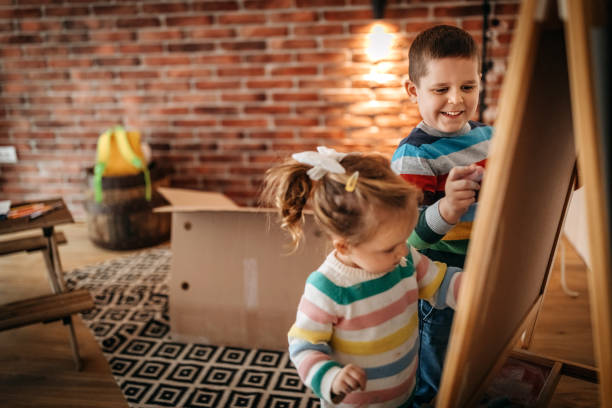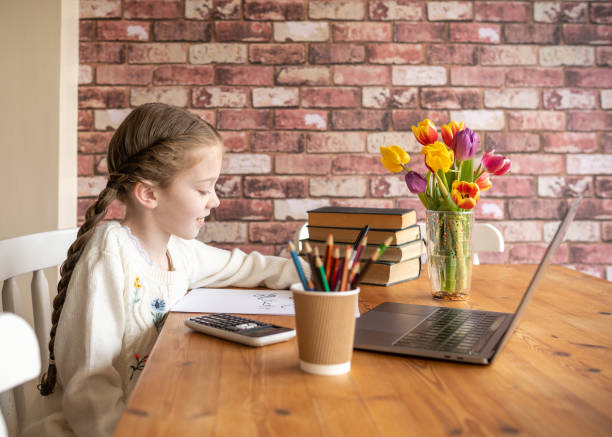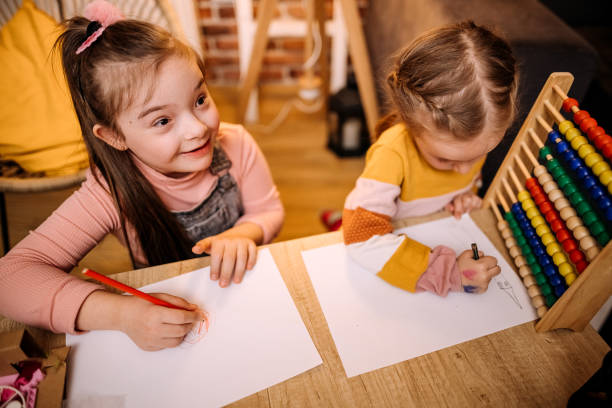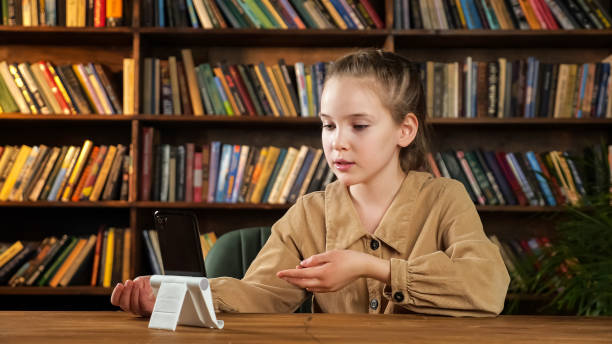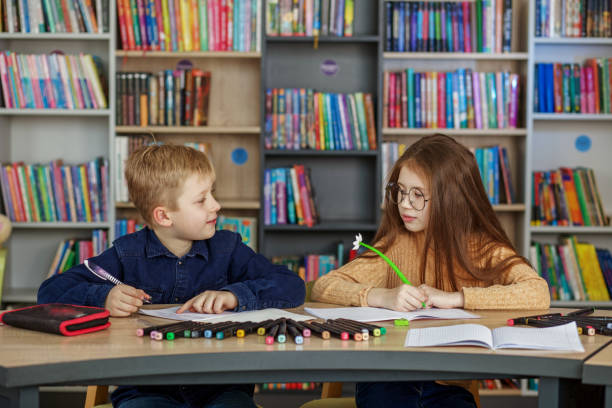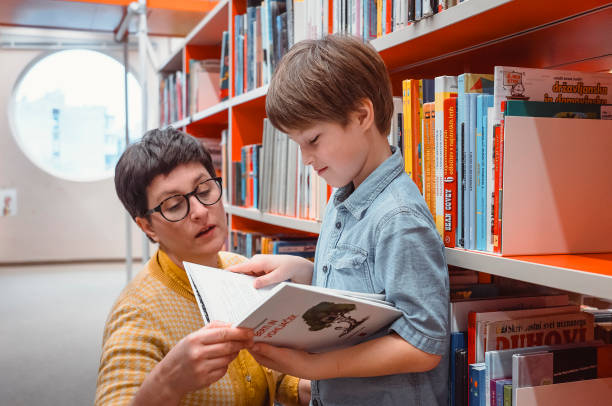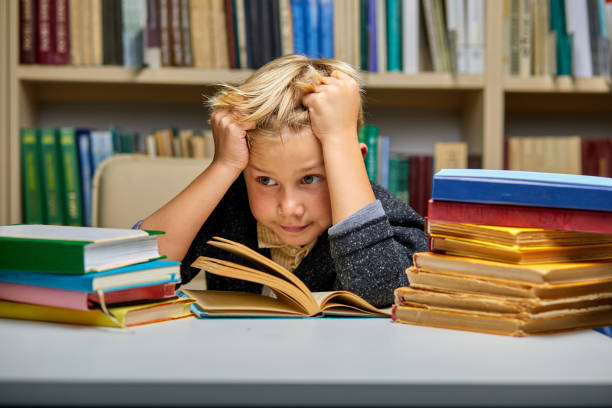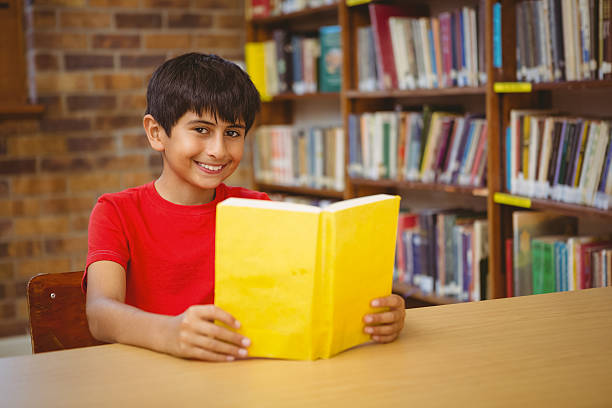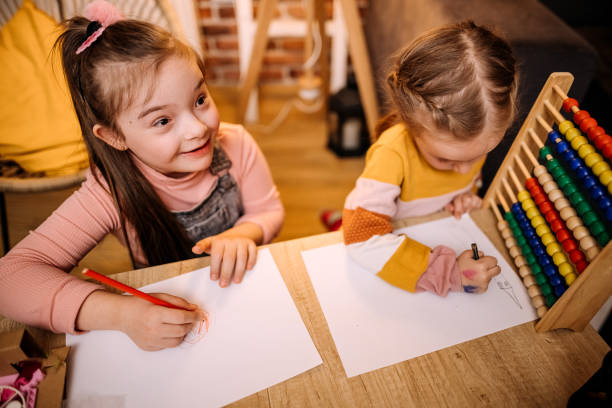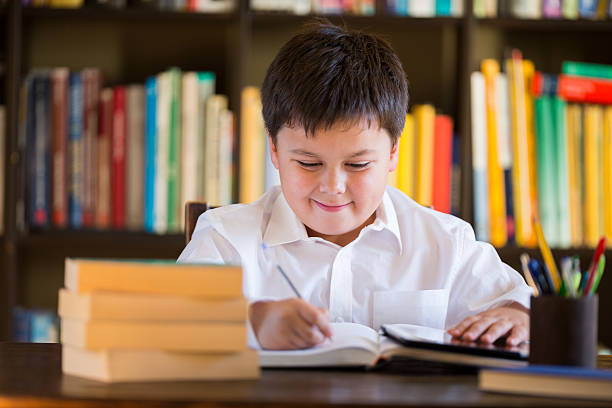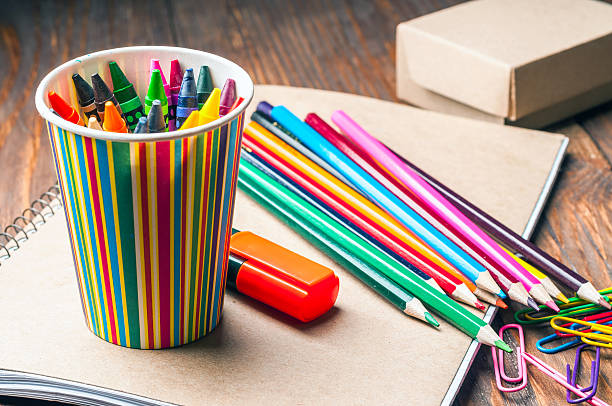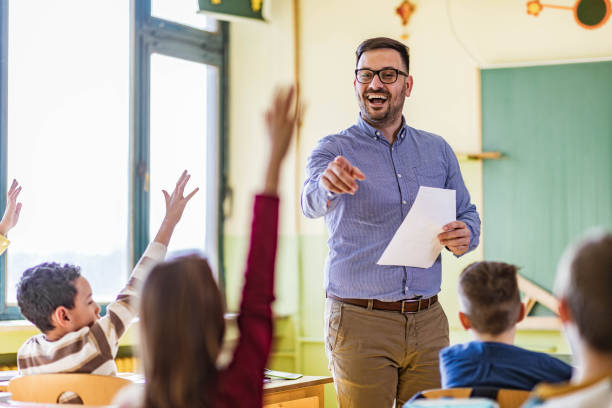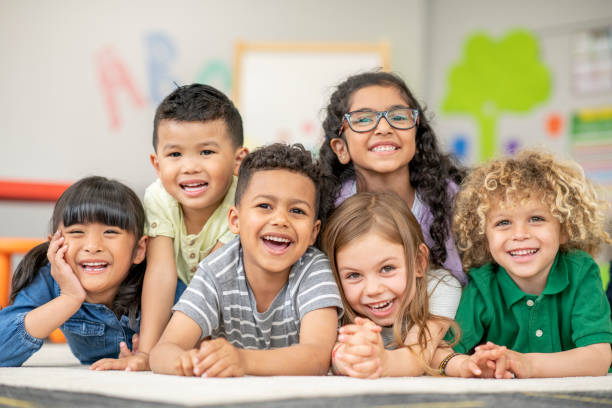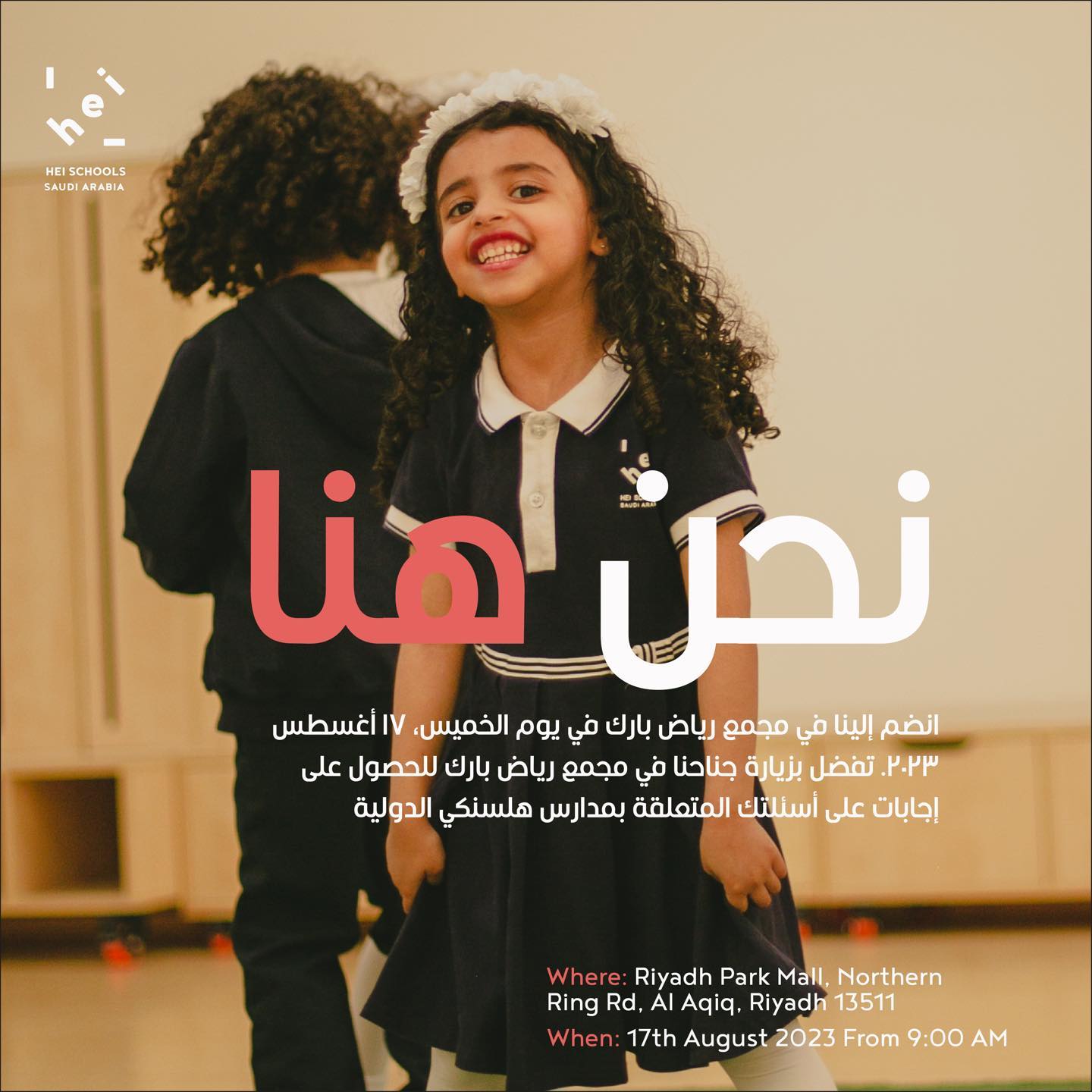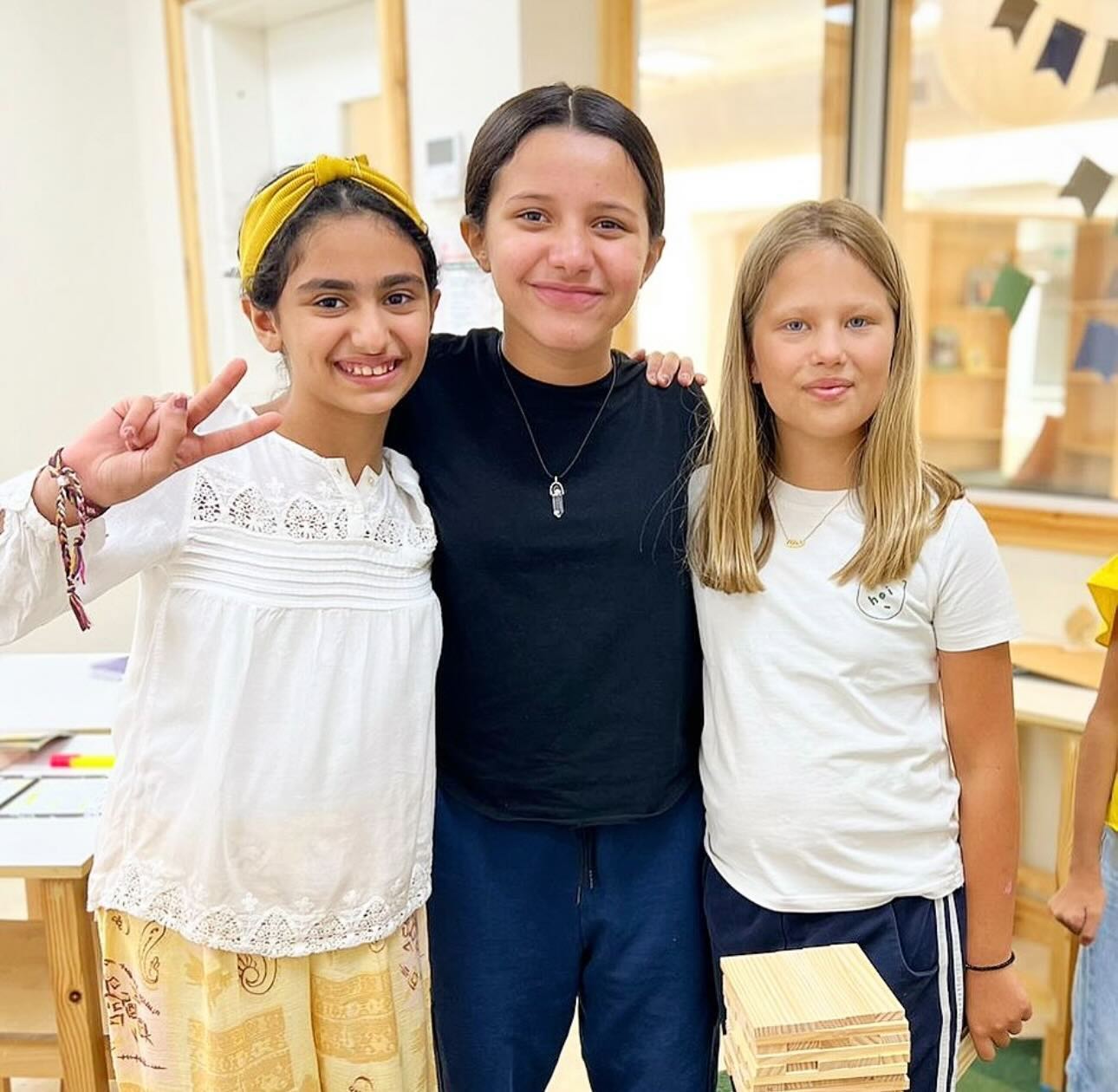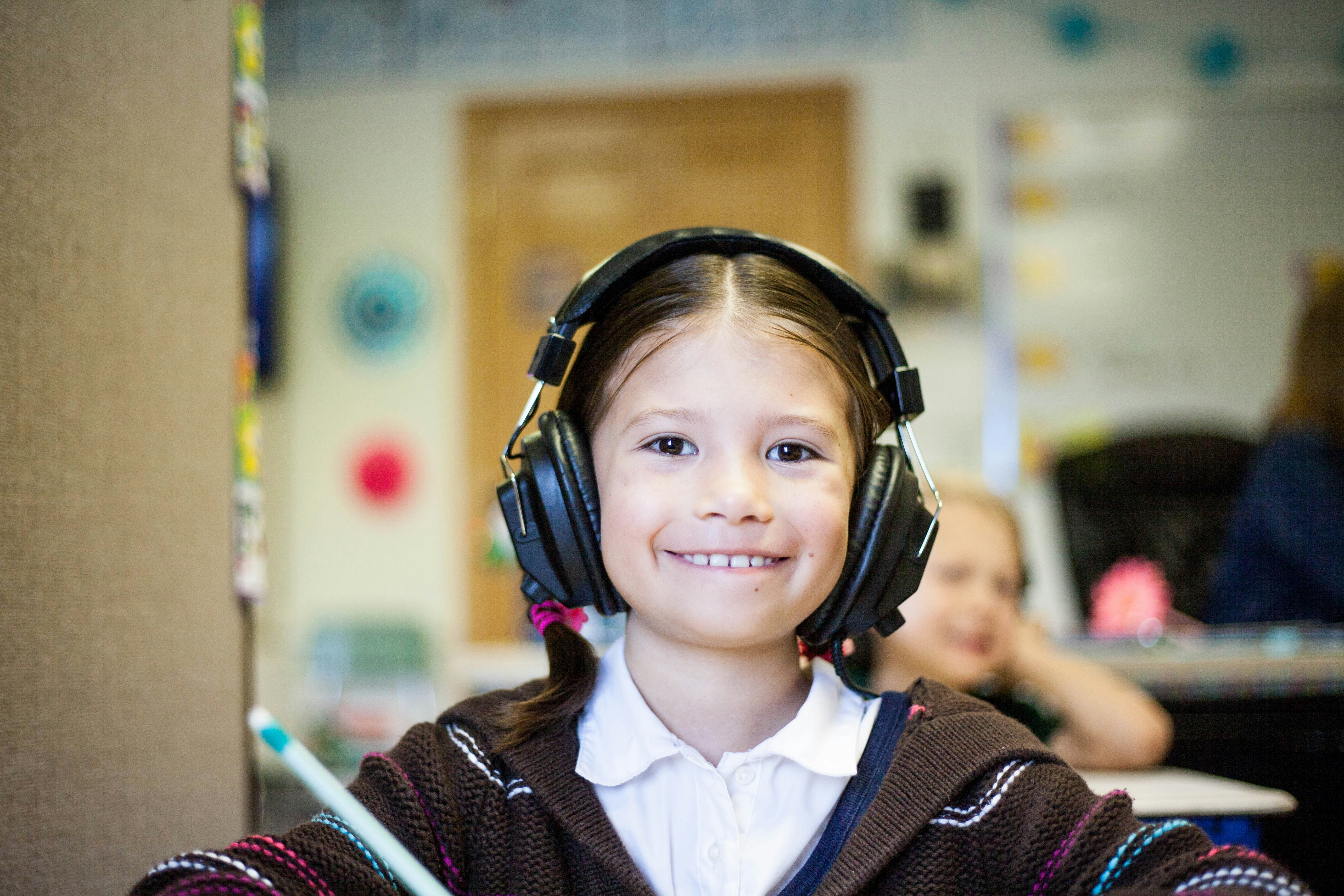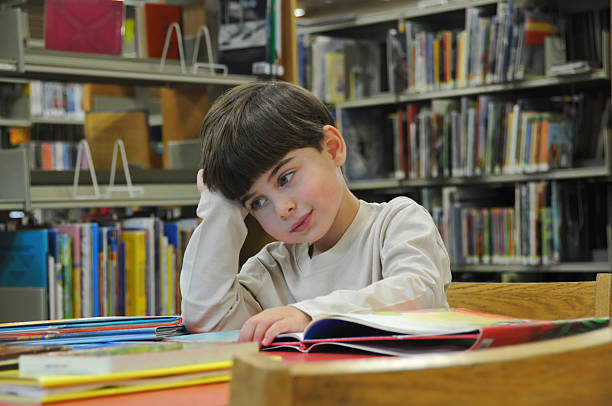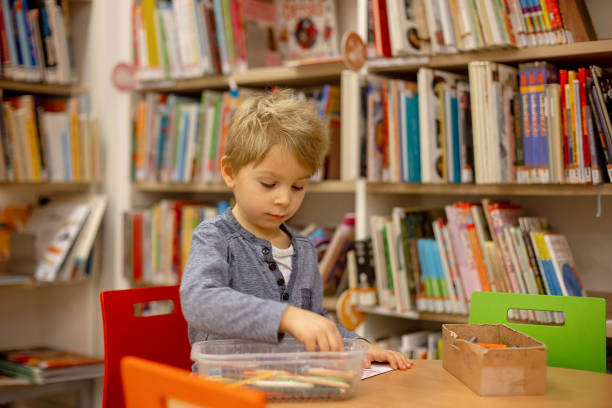Blog Detail Page
4 Big things to teach Your kids Before kindergarten
admin
Home Tutors
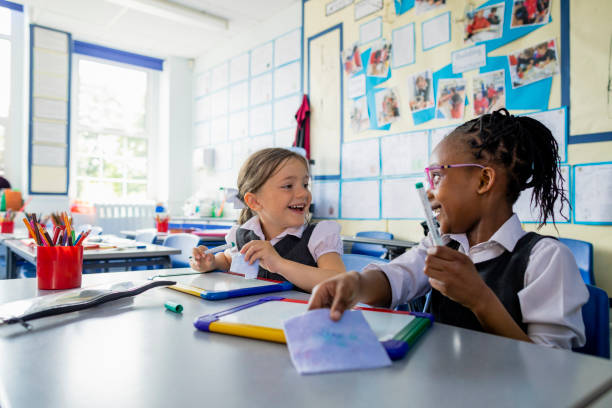
Do you ever wonder what your kids are learning at preschool when it seems like they’re just playing all day? The good news is that if they’re playing, they’re learning!
Learning during the first 6 years is about building skills through play. Maria Montessori said, “Play is the work of the child” and many theorists such as Piaget and got sky agreed on its importance.
This does not only apply to babies and toddlers. Preschoolers learn through play when using their whole body and engaging the senses.
A good preschool will give your children a well-rounded, holistic education through a balance of free play and well-planned, adult-guided play.
So, what do kids learn in preschool? Here are 16 of the most important foundational skills children develop in the preschool years.

1. Gross Motor Skills
Physical development starts with developing gross motor skills – the large muscles of the body.
At preschool, your children will be moving nonstop. Movement is the most important skill to develop first in the early years as it is necessary for all other learning.

Children must develop skills such as core strength, hand-eye coordination and agility.
They also need to develop two important senses – vestibular and proprioception – responsible for balance and body awareness.
Movement is important as it stimulates learning, improves concentration, gives the brain oxygen and works both sides of the brain. Good gross motor skills also lay the foundation for fine motor skills.
Some examples of gross motor activities:
- Throwing and catching balls
- Playing hopscotch
- Singing action songs
- Playing with bean bags
- Balancing on beams
- Climbing and hanging
- Skipping and hopping
- Running and chasing games
Gross motor skills can be developed through many indoor and outdoor activities.
2. Fine Motor Skills
Fine motor coordination – the development of the small muscles – is a prerequisite to learning how to write and is necessary for performing everyday tasks.
In preschool, children spend a large portion of their day working on these skills through creative arts and play.
Children’s fine motor skills are developed through all kinds of art activities, such as:
They can also be developed with other fine motor activities such as:
- Pegboards
- Puzzles
- Threading and lacing
- Playing with pegs
- Playing with construction toys (Lego is great)
- sensory play, such as playing with playdough
Developing a pencil grip and learning to form letters starts with all these kinds of fine motor activities.
3. Early Mathematical Concepts
Preschool is where the foundations for mathematics begin. No child ever learns maths in the first grade. The type of maths they learn just becomes more formal.
In the preschool grades children learn:
- Rote counting (such as counting up to 20)
- One-to-one correspondence (reliably counting objects)
- Classifying
- Sorting
- Length
- Capacity
- Weight
- Area
- Temperature
- Time
- Space
- Shape
These concepts are learned while having pure fun, with hands-on activities – in the sandpit, while baking, playing with water, building with blocks and even while tidying up.
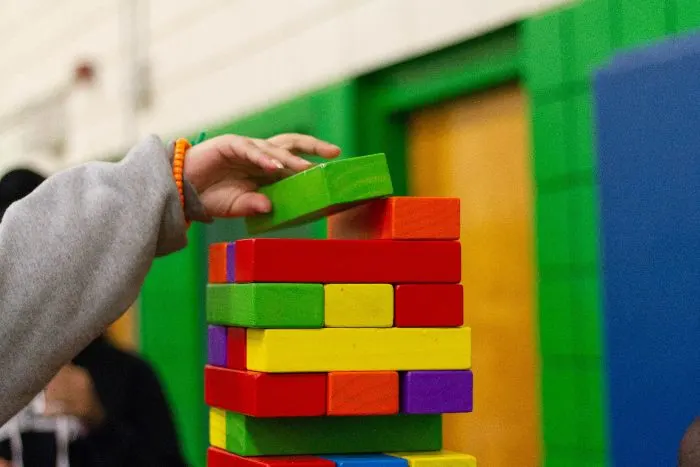
4. Problem Solving and Critical Thinking
Developing thinking skills and problem-solving skills abilities is a crucial part of early childhood education. Learning this in preschool also helps children with mathematical problem solving during the formal grades.
Problem-solving and thinking skills are built during simple activities such as:
- Construction play
- Building puzzles
- Playing board games
- Resolving problems during social play
- Playing games like Odd One Out
- Asking open-ended questions during stories
5. Language and Vocabulary
Preschool is a language-rich environment where children’s vocabulary expands dramatically. Language development is a key part of a child’s cognitive development.
Language skills include learning sentence construction, the use of grammar and tenses, the meaning of words, etc.
Language and vocabulary are learnt throughout the day while:
- Having circle time discussions.
- Singing nursery rhymes and songs.
- Playing games.
- Playing alone and with friends.
- Learning about a theme.
- Playing with toys, equipment and other materials.
- Listening to stories.
- Telling short stories.
6. Pre-Writing Skills
Writing starts with developing important pre-writing skills through play and art activities.
These four skills are specific requirements for learning to write and will be the focus during preschool:
- Pencil grip
- Crossing the midline
- Learning about letters and their formation (through play, not formal writing)
- Learning to form patterns (for example drawing big waves or zig-zags which mimic the shapes found in letters)
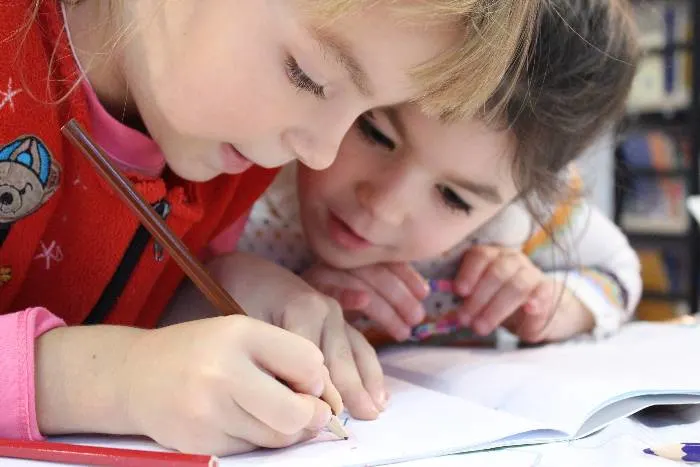
7. Listening Skills
Listening is one of the most important and often underdeveloped skills. This should be a focus area during preschool.
Children learn to listen by doing these kinds of activities:
- Listening to stories
- Playing games such as Broken Telephone or I Spy
- Following instructions
- Class discussions
- Music activities
Although your children are learning to listen at school, it is highly recommended to focus on these skills at home too. Children with good listening skills are much more successful and capable at school.
Here are some listening games you can play at home.
8. Musical Skills
Music in preschool is about so much more than just developing musical skills.
Music develops children’s:
- Vocabulary
- Understanding of rhyme, syllables and sounds
- Auditory perception
- Concentration
- Fine motor skills (finger plays)
- Gross motor skills (action rhymes)
- Mathematical skills (counting rhymes)
- decision-making skills (games such as musical chairs)
9. Visual Perceptual Skills
Visual and auditory perception are the two main building blocks of learning to read.
Children develop their visual perception during preschool with the following types of activities:
- Activities that teach about shapes and colours
- Patterning activities
- Puzzles and tangrams
- Card games
- Memory games
10. Auditory Perceptual Skills
Auditory perception is the brain’s ability to make sense of what the ears hear. It is vital for being able to learn sounds for reading.
These kinds of activities develop auditory perception:
- Reciting nursery rhymes and poems
- Playing with instruments
- Playing sound games
- Playing word games
11. Pre-Reading Skills
During preschool children develop early literacy skills, which include all the necessary pre-reading skills to set them up for learning to read formally.
Learning to read requires developing sound knowledge (auditory perception) and symbol knowledge (visual perception), as explained above.
These are the five main pre-reading skills:
- Print awareness – understanding that written words convey meaning.
- Motivation to read – exposure to books that ignites a desire to read.
- Listening comprehension – the ability to understand what is heard.
- Letter knowledge – informal exposure to letters and their sounds during play.
- Phonological awareness – being able to hear sounds in words (beginning, middle and end sounds).
Children are exposed to these kinds of activities:
- Playing rhyming games
- Playing word games
- Games involving hearing syllables
- Playing listening games
- Following instructions (single and multiple instructions)
12. Memory
At school, children also strengthen their memory, a skill they will rely on for learning throughout their education.
These are the kinds of games that are often played in preschool classes:
- Memory card games (get your own cards by downloading the FREE set of printables at the end of the post).
- Circle memory games such as “I went to the shops and I bought a…”. Each child has a turn to add an item, but must first recall the entire list before adding their item.
- List games such as “Categories“. Pick a category (e.g. fruits) and go around the circle asking each child to add the name of one fruit. No fruits may be said twice so children must remember which ones were already mentioned
13. Early Science Concepts
As children explore and interact with their environment and nature, they also learn about early science concepts.

A great example is learning about physics by discovering the properties of water during water play:
- Water makes sand heavier.
- Water influences the texture of sand.
- Water falls through space (e.g. through a sieve).
- Air (wind) moves water.
- Water is a liquid because it pours.
- Water takes the shape of the container it is poured into.
14. Social-Emotional Skills
Social and emotional growth is as crucial to child development as physical and intellectual growth are and should form part of a preschool curriculum.
Social development is about learning communication skills, building healthy relationships and interacting appropriately with others.
Through daily social interactions, children learn important social skills such as:
- Taking turns
- Sharing
- Considering the opinions of others
- Showing empathy
- Cooperating and negotiating
- Resolving conflicts
- Leading and following
- Creating and following rules in games to encourage positive interaction
Emotional development includes building skills such as:
- Self-awareness
- Expressing emotions in a healthy way
- Emotional intelligence
- Empathy
15. Creative Expression
Preschool is where a child’s creative spark can really be ignited.
There are many opportunities throughout the school day where children develop their creative expression:
- During art activities – painting, constructing, drawing
- Musical activities – dancing, singing and playing with instruments
- Playing with construction toys
- Drama and puppet play
- Telling stories
- Fantasy/ dress-up play
- Outdoor play (e.g. building forts)
16. Independence
Last but perhaps most importantly, the greatest takeaway for young children at preschool is their growing independence.
Children learn to take care of themselves and show a sense of responsibility and a desire to be competent.
There are endless opportunities for teaching kids independence:
- Regular tidy-up times
- Taking accountability for actions
- Looking after belongings (shoes, bags, books, etc.)
- Self-care (going to the bathroom, washing hands, etc.)
- Making choices throughout the day (during free play or activities with choice)
And there you have it. That is certainly not a complete list as your kids are learning so much but that is more or less a summary of what skills a preschooler should have and what good preschools should be focusing on.
Here is a detailed school readiness checklist if you’d like to delve into each developmental area more.
Be wary of preschools that push academic skills over play-based learning. This is developmentally inappropriate and, as you can see from the list above, play is important during the early years.
At a glance
Many kids who are ready for kindergarten can say the alphabet and count to 10.
Kindergarten readiness includes motor skills like holding a pencil and using scissors.
Self-care like getting dressed and not needing help in the bathroom are important kindergarten skills.
When kids are getting ready for kindergarten, many families wonder about academic skills. But self-care and social and emotional skills are important for kindergarten readiness, too. For example, does your child need help using the bathroom? Learn about the different kinds of skills kids are expected to have when they start kindergarten.
Language skills
Speak in complete sentences and be understood by others most of the time
Use words to express needs and wants
Understand two-step directions
Make comparisons and describe relationships between objects like big/little, under/over, and first/last
Reading readiness skills
Enjoy listening to stories
Know how to find the first page of a book and which way to flip the pages
Recognize familiar logos and signs, like stop signs
Recite the alphabet and identify most of the letters
Recognize and try to write their own name
Recognize when two words rhyme (like cat and bat)
Start to connect letter sounds to letters (like the sound of the first letter in their name)
Draw a picture to help express an idea
Math skills
Count from 1 to 10 without skipping numbers
Match a number to a group of five or fewer items (“I see three cats”)
Recognize and name basic shapes (square, circle, triangle, rectangle)
Understand more than and less than
Arrange three objects in the right order (like from smallest to biggest)
Name or point to the colors in a box of eight crayons
Self-care skills
Use the bathroom and wash up on their own
Get dressed on their own (but may still need help with buttons, zippers, and shoelaces)
Know and can say their first and last name and age
Social and emotional skills
Separate from a parent or caregiver without getting overly upset
Interact with other kids
Pay attention for at least five minutes to a task an adult is leading, like listening to directions for an activity or discussing the day’s weather during circle time
Fine motor skills
Use a pencil or crayon with some control
Use scissors
Copy basic shapes
Make distinct marks that look like letters and write some actual letters, especially the ones in their name
Put together a simple puzzle
Gross motor skills
Run
Jump with feet together
Hop on one foot
Climb stairs
Bounce a ball and try to catch it
How to help your rising kindergartner
Kids develop skills at different rates. It’s not unusual for kids to have strong skills in one area and weak skills in other areas. Some states use kindergarten readiness tests to get a sense of which early learners might need extra help in some areas.
If you’re concerned your child isn’t ready for kindergarten, talk with your child's preschool teacher and work together to come up with a plan to address any trouble spots. You might also want to talk with your child’s health care provider. Learn about the pros and cons of delaying kindergarten for a year.
If your child is headed for kindergarten, explore these steps for a smooth transition. You might also want to see a set of videos on what kindergarten academic skills look like in action.
Here’s an overview of what your child will learn this year.
1. Kindergarten language arts
The alphabet
Learning to identify the alphabet’s letters is the first step towards reading and writing. So get ready to practice those ABCs and hear that classic alphabet song on repeat!
Beyond identifying letters, there will also be a major focus on phonics. Your child will learn each letter’s sound. By the end of the year, they’ll be able to distinguish consonants from vowels and begin to understand the role each plays in a word.
Reading short words and storybooks
Learning to read may be the most exciting part of kindergarten. Once a child starts reading, the potential to learn is endless!
The kindergarten curriculum will focus on high-frequency sight words and short words that are easy to sound out. Educators are looking to encourage reading confidence.
Tip: if your child is a more advanced reader, ask their teacher to recommend books to match their reading level so they stay interested and challenged.
Writing letters, short words and their name
Writing is an important part of the kindergarten curriculum. Your child will learn to:
- Print both upper and lower-case letters
- Write their own name
- Create tiny stories using short words
If your child struggles with writing, don’t stress. Many kids are still developing their fine motor skills at ages 5 and 6. With a bit of practice, your child’s scribbles will soon form legible words!
Tip: Encourage your child to practice writing their name in different ways or with different writing tools.
Your child’s language skills have changed dramatically since the toddler years. But there’s still much to learn.
While in kindergarten, your child will continue to grow their conversation skills. New friends and social situations — and more reading — will expand their vocabulary.
Tip: Even though they’re getting older, don’t stop reading out loud with your child. Together you can tackle more complex stories and ideas, leading to an even better understanding of the world!
2. Kindergarten math
Numbers and counting
By the end of kindergarten, your child should have a solid understanding of numbers one through 20. And this means much more than just rote counting.
Kindergarten classrooms often feature great math manipulative to help kids grasp abstract math concepts. The number "2" doesn’t mean much until you pair the word with the image of two blocks. This idea will stick even more if your child is given the chance to build and create numbers with objects they can touch and hold.
Your child will also likely learn basic skip counting. They’ll soon be able to count by 2s, 5s and 10s. This is an important first step into multiplication and division, though they won’t fully tackle those topics for a couple of years.
Identify shapes
The basics of geometry start now. Your child will have plenty of time to explore both two-dimensional and basic three-dimensional shapes. The math manipulative available in classrooms can also make a huge difference in your child’s understanding here.
They’ll be able to observe a shape from all sides, and will begin to understand why a square is a square. This basic knowledge of sides and angles will set them up for future math success!
Simple addition and subtraction
Now that your child has a secure understanding of the first twenty or so numbers, they can really dive into addition and subtraction.
For your kindergartner, these concepts will come together as they add objects to a set, or take some away. This will also help cement their understanding that larger numbers “contain” smaller numbers (i.e. 7 is made up of 4 and 3).
3. Kindergarten science
Plants and animals
Kids are naturally curious, and nature is their first laboratory. There is so much to learn about the natural world! Plants and animals often have a lot of appeal because children encounter them every day.
In kindergarten, your child will focus on basic life cycles, like that of a frog or butterfly. And they will learn the different parts of a flower or of insects. Identifying and labeling is a major component of early science instruction.
The senses and the body
Heads, shoulders, knees and toes will be a popular song this year! What the senses are and how they work is an important part of the kindergarten curriculum, as well as identifying and labeling their own body parts.
The weather
The weather is a great science topic for kindergartners because it’s something they encounter every day. It affects their clothing choices and whether or not they can play outside. Learning the basics of the water cycle or why it snows is fascinating information for a five or six year old.
Time
Time is abstract and still tricky at this age, but your child can understand more now than before. The set schedule of school is a great way to make time more tangible. They wake up at 7am, leave at 8am, eat lunch at 11am and so on.
Visual schedules, like this one from Teaching Mama can help students understand this concept more quickly.Tip: talk about time as often as possible. Your child is likely to still struggle with quarter and half hours (ex. 30 minutes after being “half-past” is hard to understand at this age), but the more exposure, the better.
4. Kindergarten social studies
Family and self
Kids are always looking for their place in the world. Sharing about their family and interests is a great way for your child to identify how people near and far are both similar and different.
Geography
Your child may know what state they live in, or their address. But it can also be exciting for them to learn about the big world that exists outside of their everyday life. Kindergarten is a prime time to introduce new cultures, with a focus on food and holidays.
Other skills in the kindergarten curriculum
Kindergarten is about so much more than academic skills. Here’s a quick look at the other things your child will learn this year.
1. Cognitive and thinking skills
Problem solving and critical thinking skills
Your child will encounter many challenges this year. It’s part of learning and growing!
Now that they’re older with better impulse control, it’s the perfect time for them to learn how to work through obstacles and frustrations.
Focusing on tasks
Under the age of six, children still have a short attention span of about 15 to 20 minutes. But this is something that can improve with practice.
With their teacher’s help and understanding, your child will learn how to better stay focused. This important skill will help them throughout their school years.
Paying attention
Sitting and listening is no child’s strongest attribute, but it’s essential to school success. In kindergarten, they’ll learn how to respectfully pay attention, and be given the time to master it.
2. Behavioral and social skills
Making friends and resolving disagreements
School is a social event. Making new friends is exciting, but it’s not all sunshine and rainbows. Friends fight, and teaching children to work through these disagreements is a normal part of a kindergarten educator’s day.
Better self-control is possible at this age, but it takes practice. School rules provide the perfect backdrop for learning to stay within expected limits and for kids to practice self-regulation.
3. Motor skills
Bone and muscle development
If you’ve recently bought your child a new school wardrobe, it can be painfully obvious that your child is still growing — and fast. More kindergarten classrooms are incorporating movement and activity into the day to help their bodies grow and strengthen.
Finger and hand control
Learning to write is an important skill, but full mastery may take another couple of years. The primary focus in a kindergarten classroom is learning the basics of holding a pencil or crayon, so your child can improve finger and hand control.
Tip: if your child needs more practice, look at adding fun activities like molding clay to your weekend activities. This can be a great way to strengthen young hands.
Designing a kindergarten home school curriculum for your child
If you’ve made the choice to home school your child for their kindergarten year, you may be worried about hitting all of the above milestones.
Don’t fret! There are lots of homeschooling resources to help you educate your child. Plus, you have the benefit of your child being able to learn at their own pace.
On particularly rough days, just remember: kids learn best through play! Relax and enjoy this learning adventure together.
1. Teaching reading and writing skills at home
Make alphabet workbooks
If your child loves coloring, make the transition to an age-appropriate workbook. These can especially help with letter recognition and writing practice.
Use labels around the house
As mentioned above, labeling and identifying are big at this age. Print out labels to use around your home. You can label everything — couch, table, crayons, tools, food and so on.
Labeling everyday objects is a great way to promote reading and expand their vocabulary.
Sound out simple skills and read aloud
This best tool in your homeschooling kit? Books!
Read, read, read, then read some more. Reading aloud will encourage your child’s interest in reading independently. Take the time to sound out simple words as you read together, and help them recognize letter sounds throughout the day.
Once they’re interested, reading skills will develop. If they aren’t there yet, don’t worry. Many kids may not learn to read until age seven or up. Keep reading together and soon their interest will come.
Encourage them to keep a journal
Keeping a journal is a great way to practice writing, with a focus on healthy social emotional practices.
2. Teaching kindergarten math at home
Incorporate numbers everywhere
Numbers are all around. Look and point out numbers in your everyday activities. Let your child help you count how many apples you’re buying at the store, or talk about how many crackers are left at snack time.
Create word problems with household objects
Baking together is an excellent way to incorporate math into your day. Even something as simple as turning down the volume on the TV can turn into a math lesson. And toy collections are a great place to start talking about addition and subtraction.
Don’t over complicate math. Use what you already have and create engaging math lessons easily.
Draw comparisons with everyday objects
- Which stuffed animal is bigger?
- Who’s taller, mommy or daddy?
- Do you think more cereal can fit in this bowl?
These are all great questions to get your child thinking and learning about math concepts.
Combine learning and fun with online games
When you’re using a homeschool curriculum, you have access to so many resources! Screen time can be used wisely to help your child learn while having fun.
Game-based learning tools like Prodigy Math Game are a great way for your child to learn and practice age-appropriate math curriculum that meets your child at their skill level.If math practice is stressing you out, share a fun online game and watch the learning happen naturally!
3. Teaching cognitive, behavioral, motor and social skills at home
Practice listening skills with fun games like red light/green light and 20 questions
If you’re tired of yelling to get your child’s attention, test their listening and comprehension skills with a fun game (turns out they really do hear you when they want to
Join community groups so your child can socialize and form friendships outside of the family
Everyone worries about socialization, but homeschooling have that covered with learning co-ops and gatherings. And there are more meetings now than ever before. A quick online search is a great way to find a group that fits your schedule and needs.
Try sports programs to develop both motor skills and social skills
Most sports programs for younger kids are offered by local communities, so don’t worry about your homeschooled child missing out. Sign them up for a sports club to work on both their social and gross motor skills.
Help your kindergartner thrive throughout the school year
Kindergarten is an exciting time, but it doesn’t come without challenges. Now that you know what’s expected of your child this year, you can help them meet their academic and social goals. Read with your child, ask them about their day, and celebrate their wins. It’s a big year for everyone!
If you’re worried about your child meeting their math goals, explore Prodigy Math Game. Prodigy can help keep the frustration out of math practice. Instead of simple worksheets, your child can learn standards-aligned math while playing an exciting video game!
Plus, with a parent account, you can play an active role in your child’s math learning. Track and support their progress while motivating them to answer more math questions.
Related Blogs
Categories
-
Home Tutors
279
Recent Blgs

online tutoring Australia
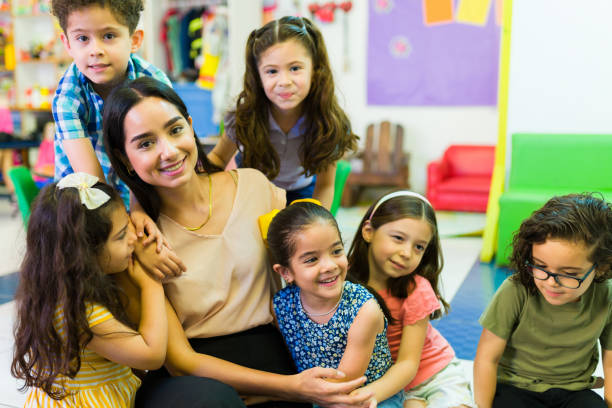
home tuition in lahore
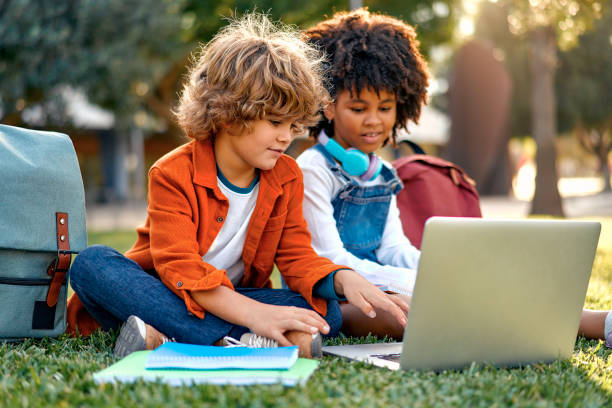
home tutors in Lahore
Tag Cloud
tutor
tutoring
home tuition
home tutoring
in home tutoring
female home tutors
female home tutors near me
female home tutor near my home
online tutor
online female tutor
female tutor for maths
maths tutor
maths tutoring
